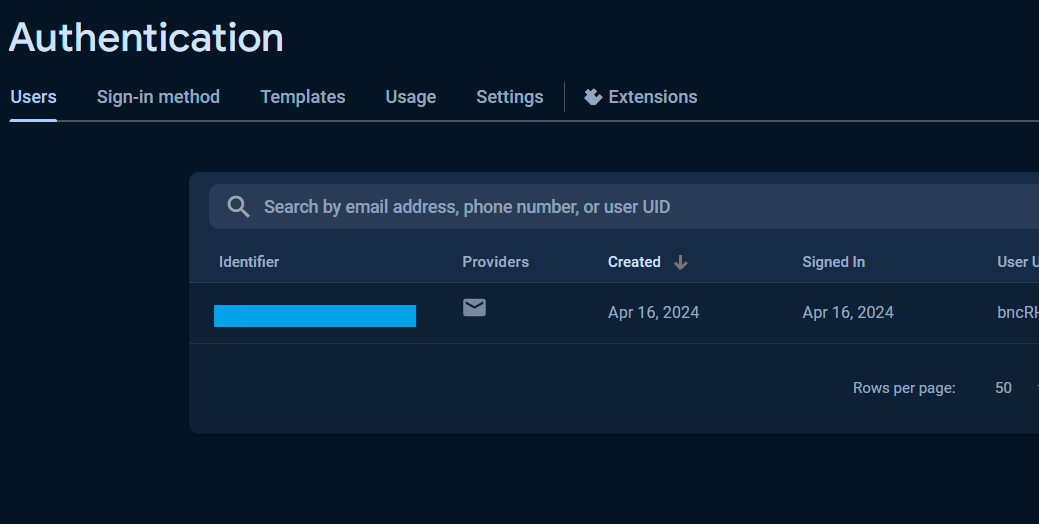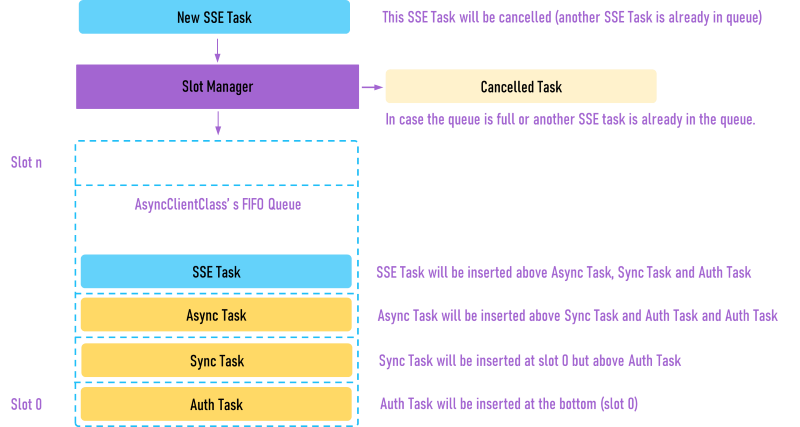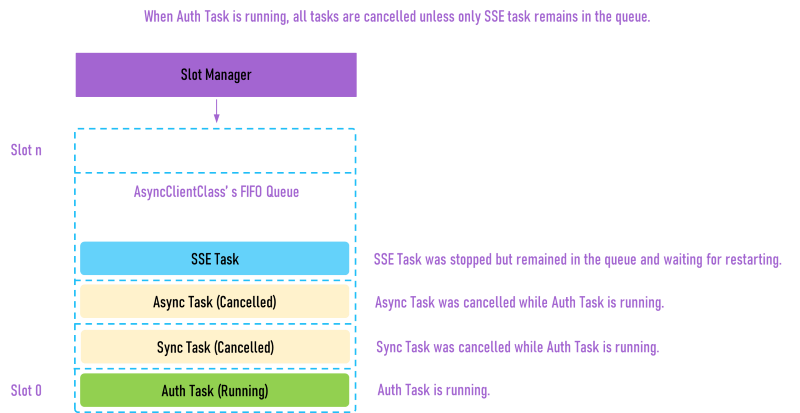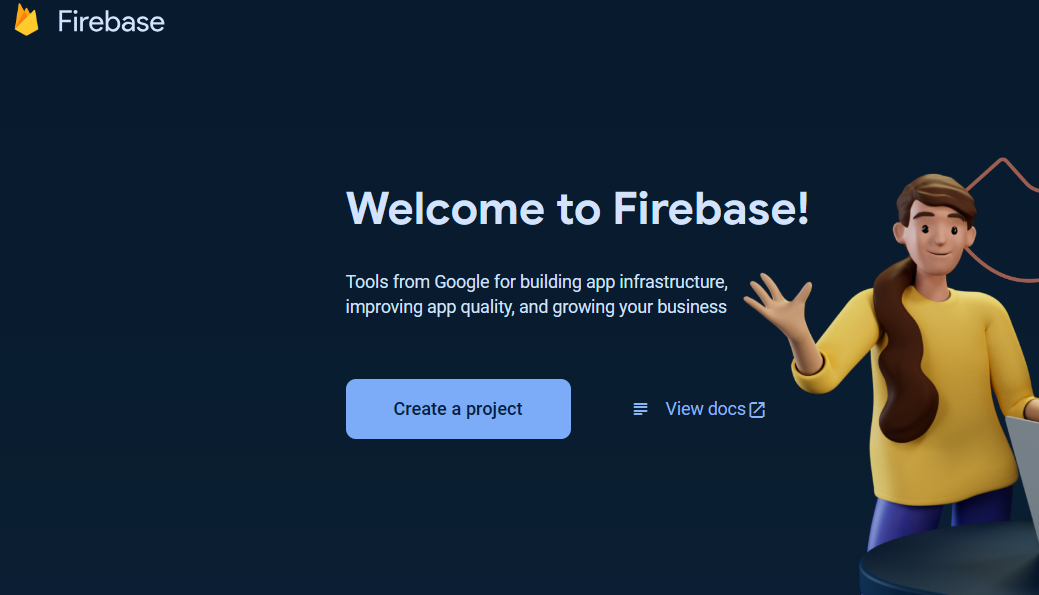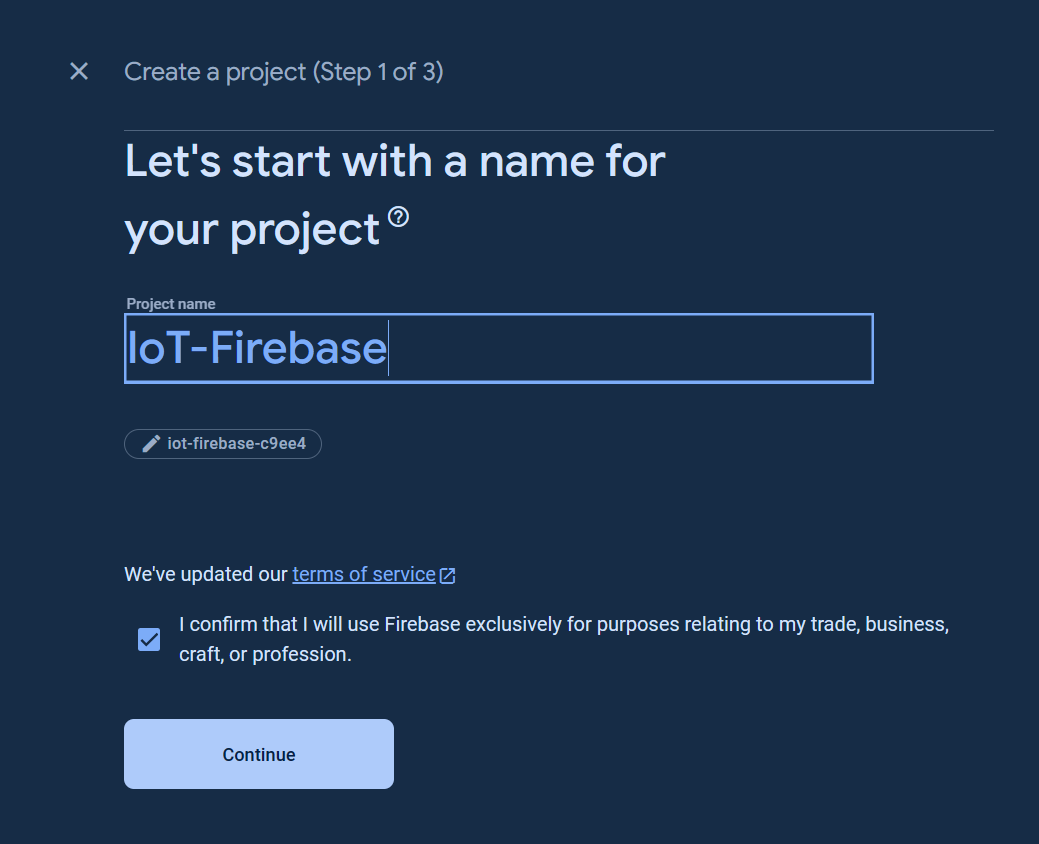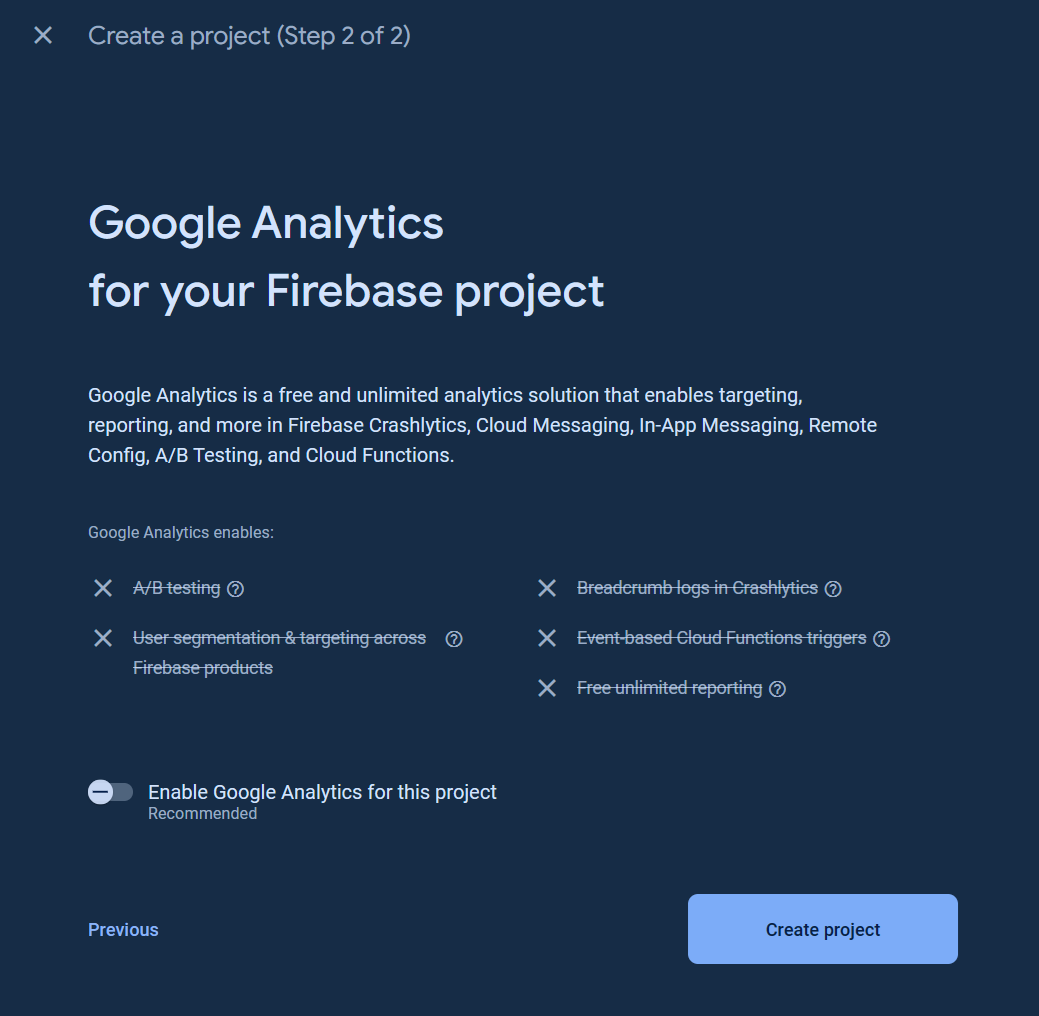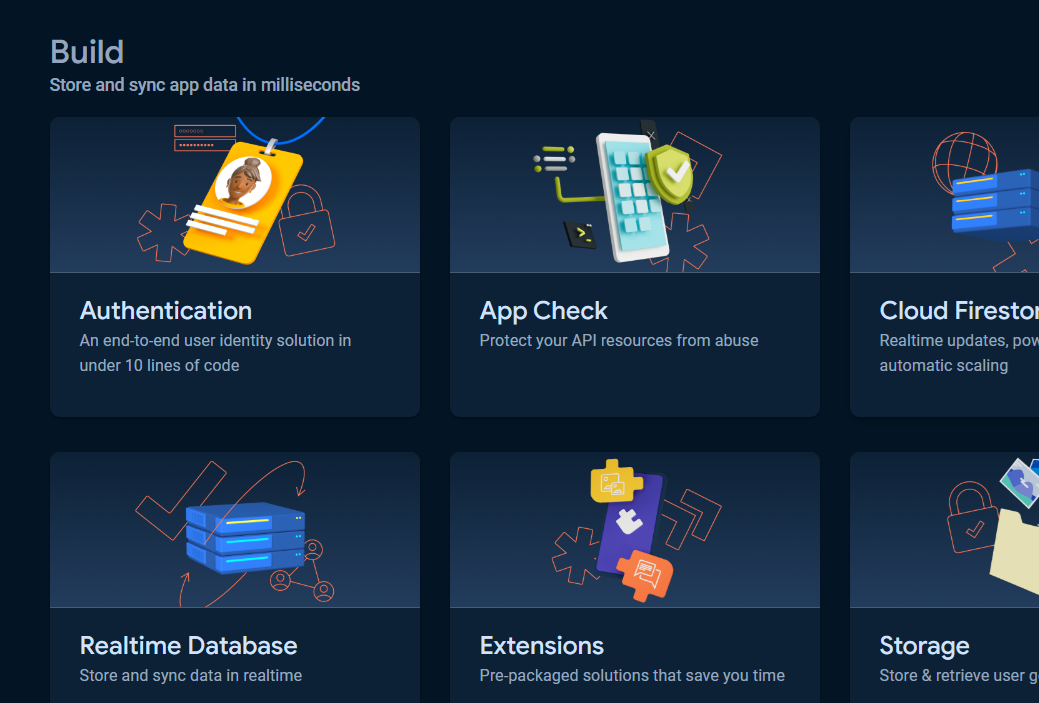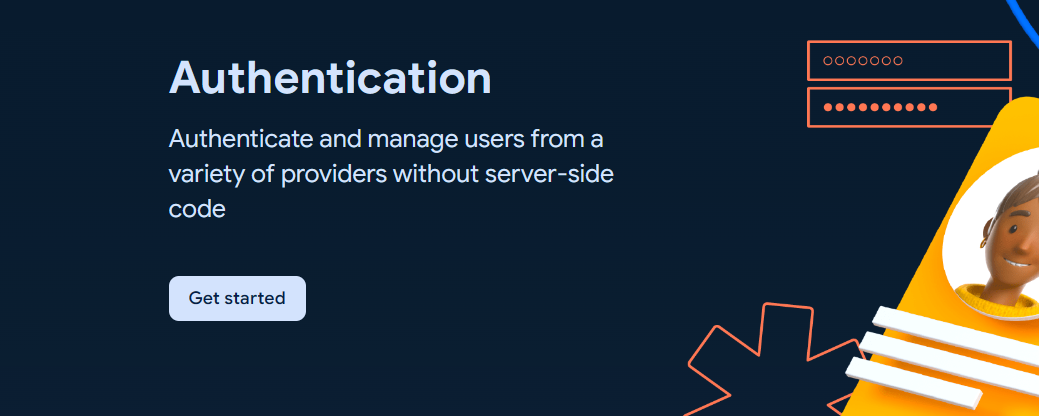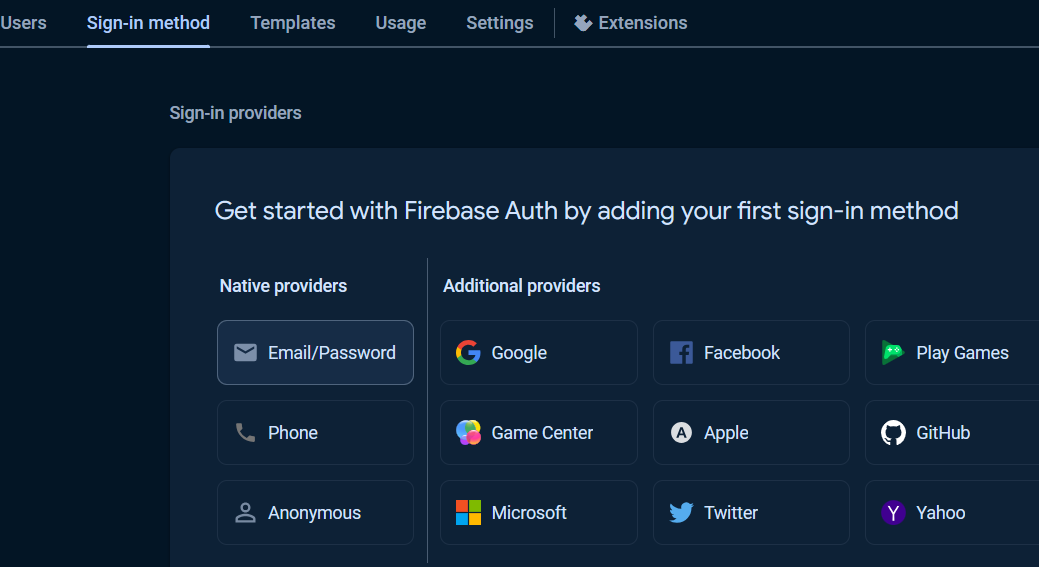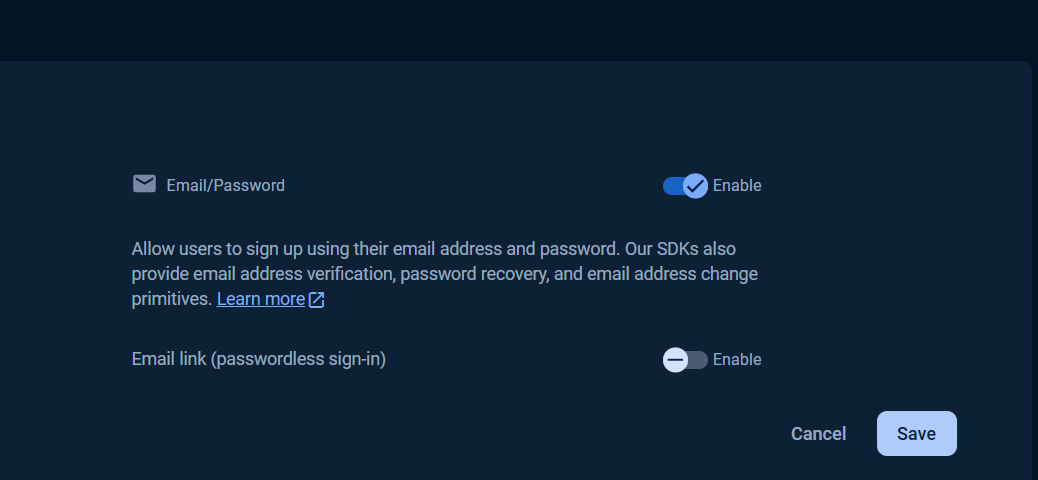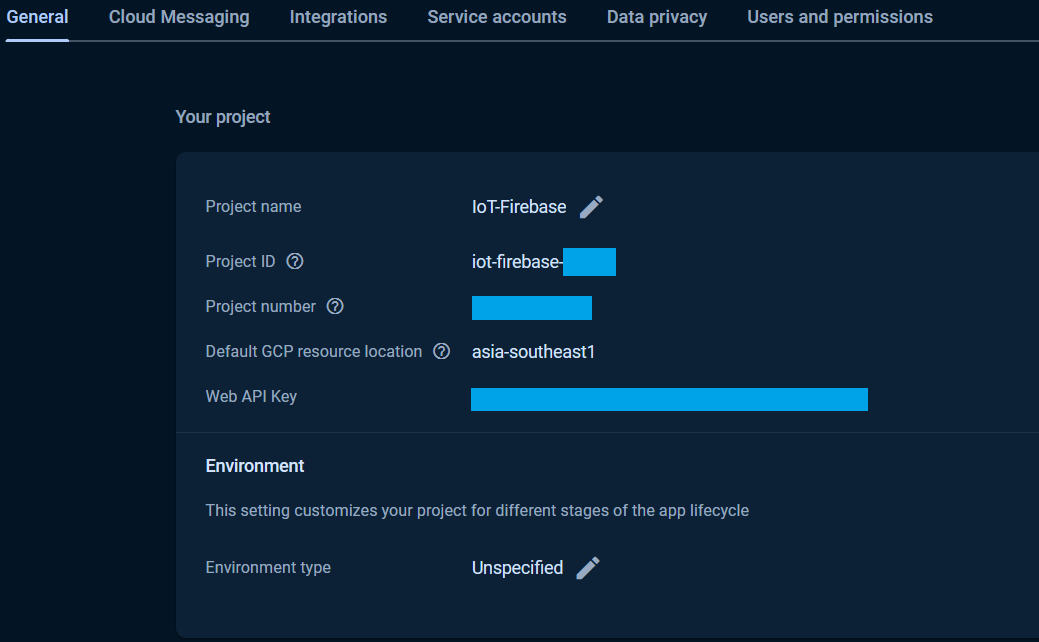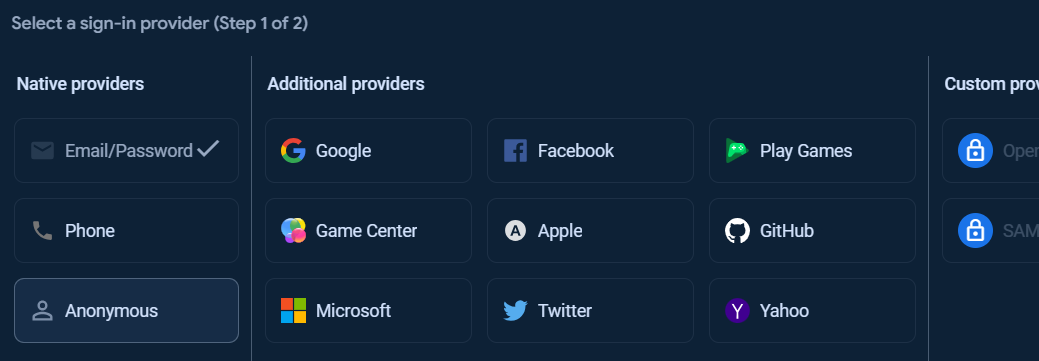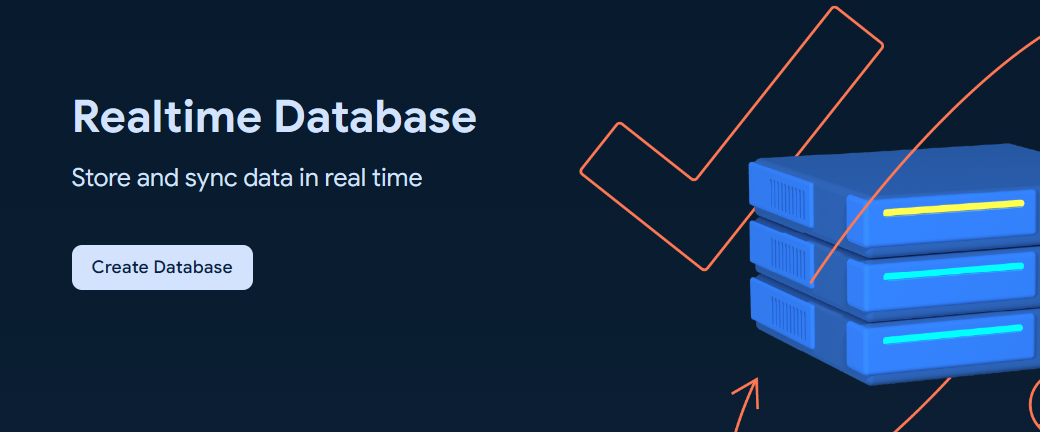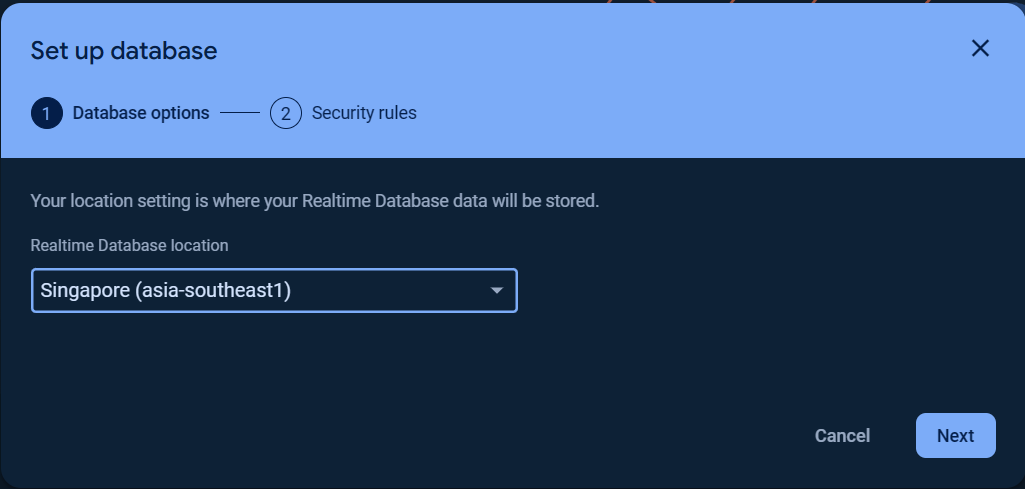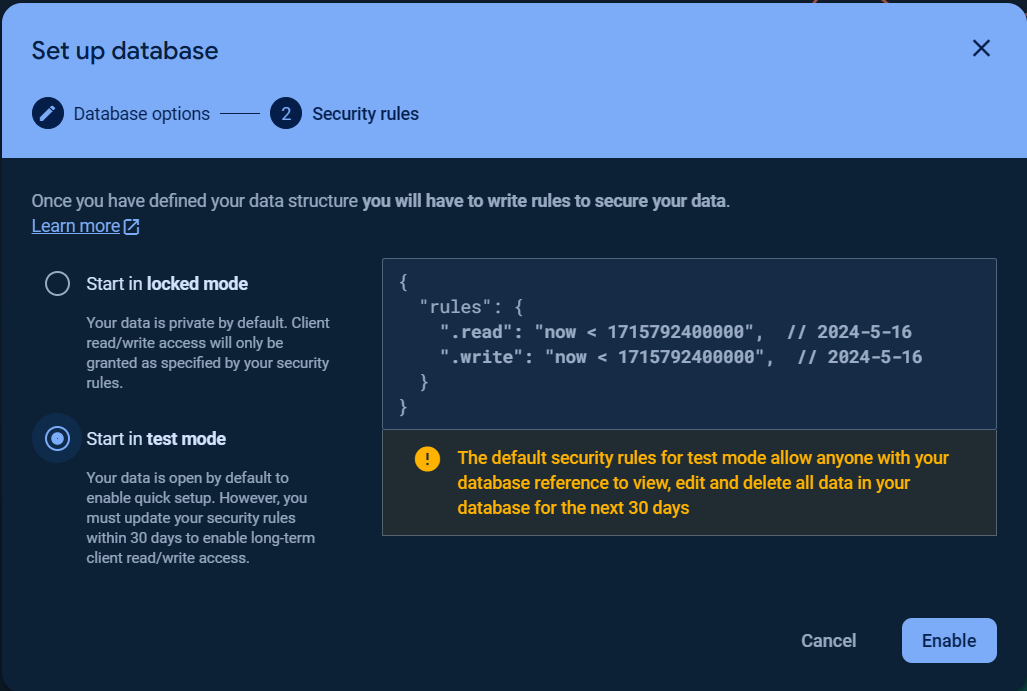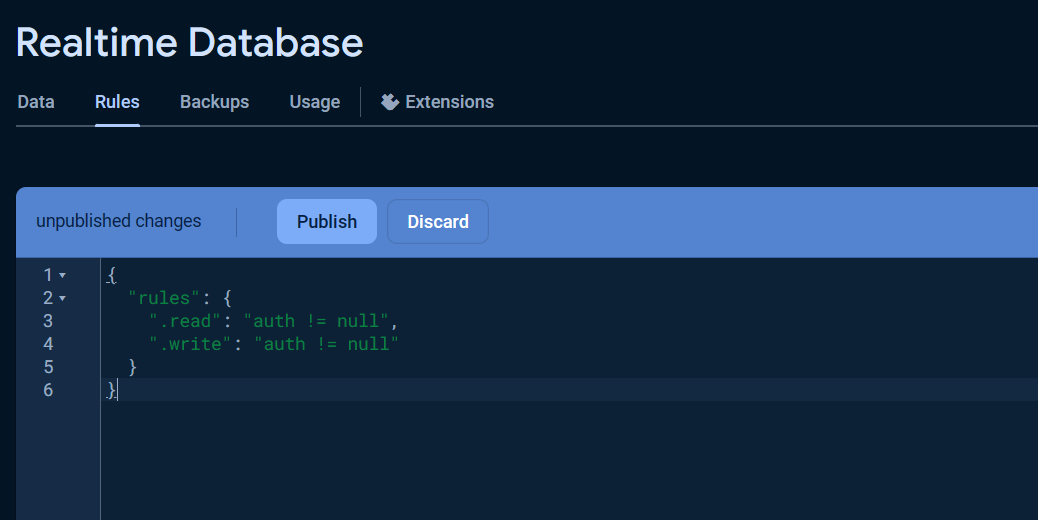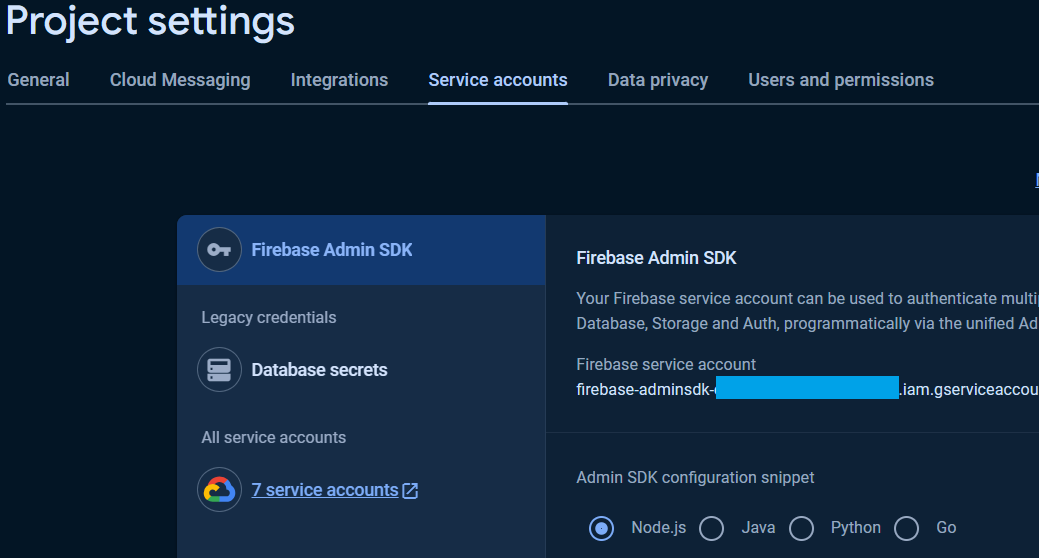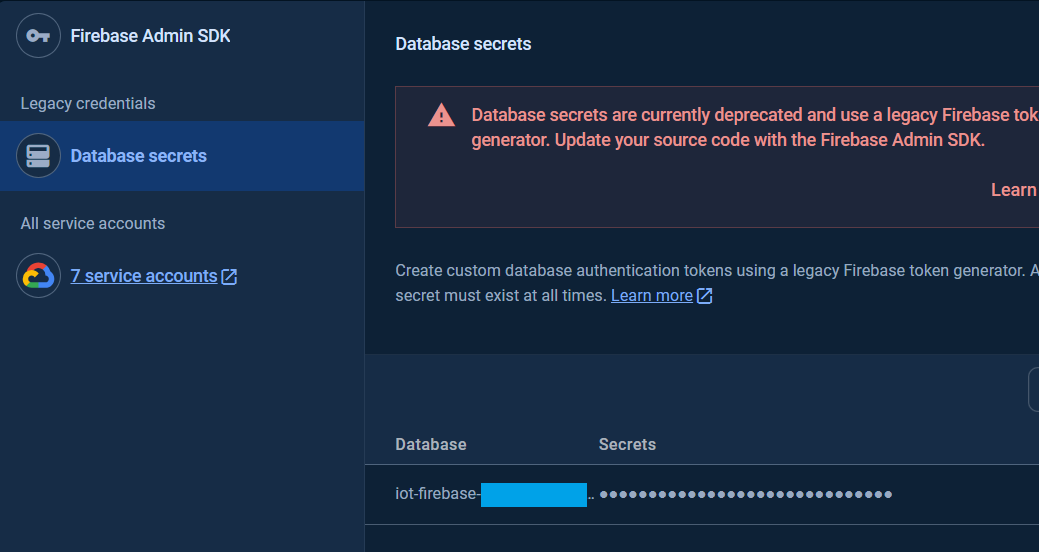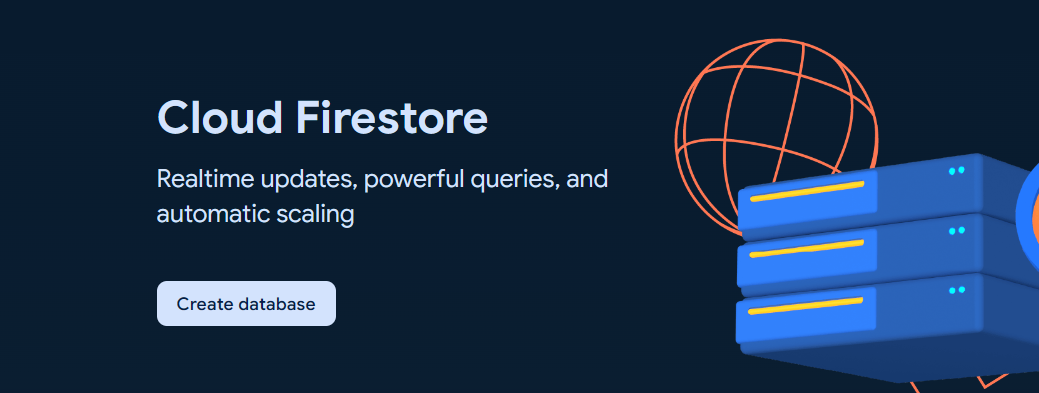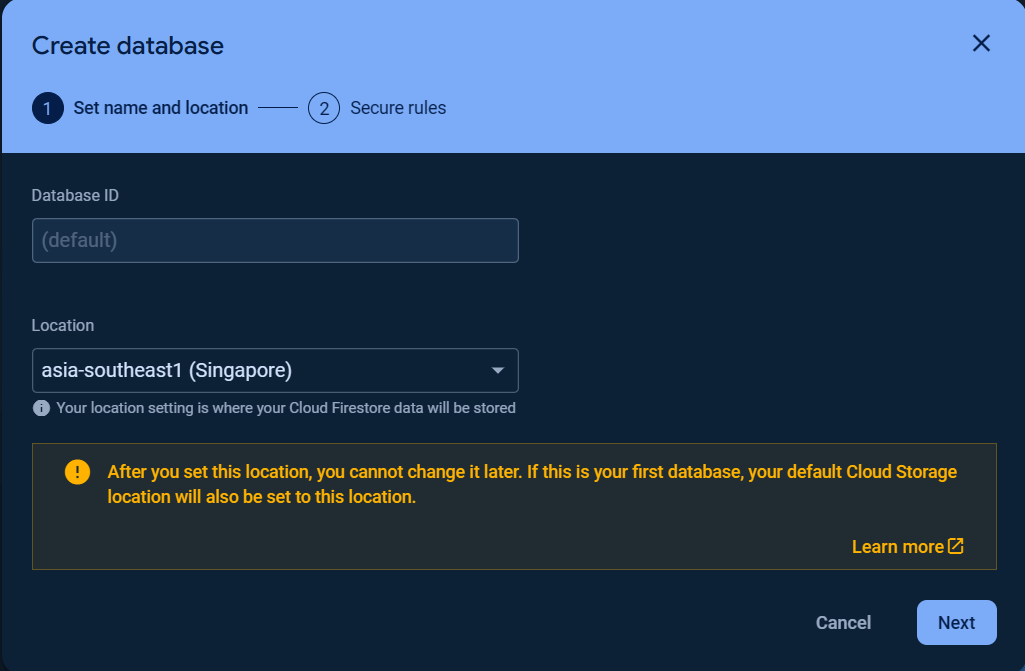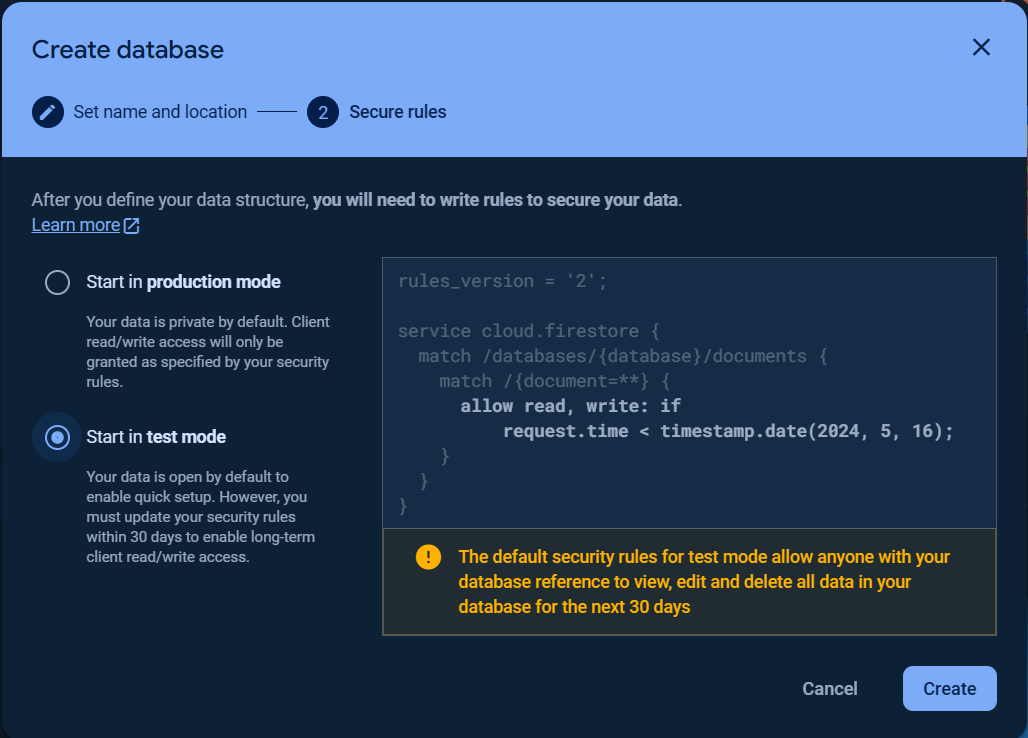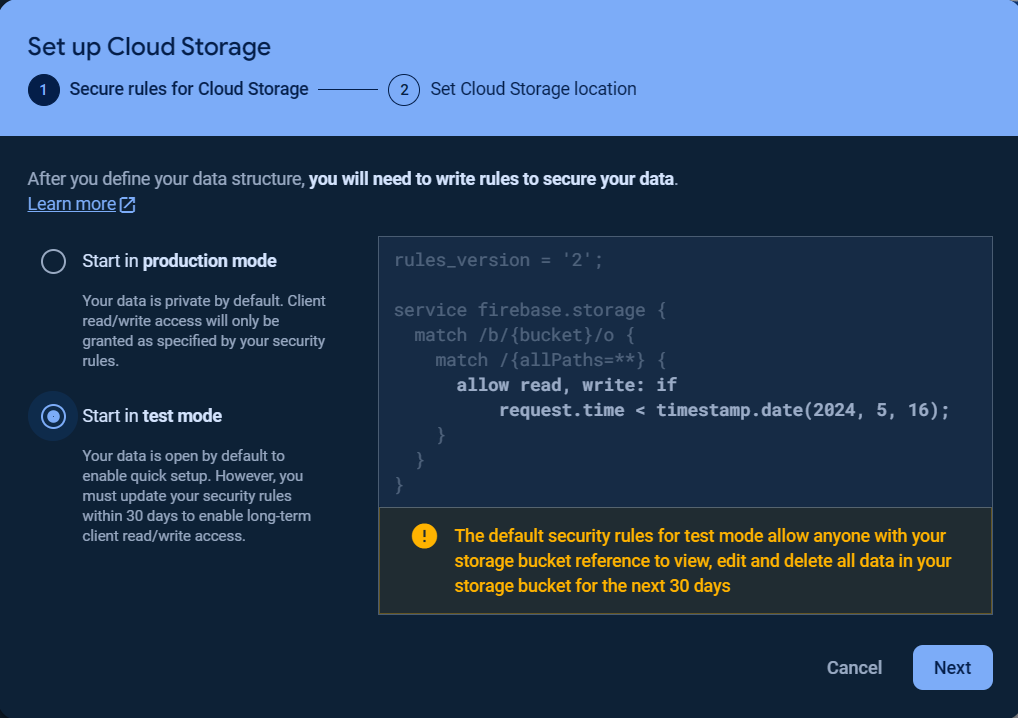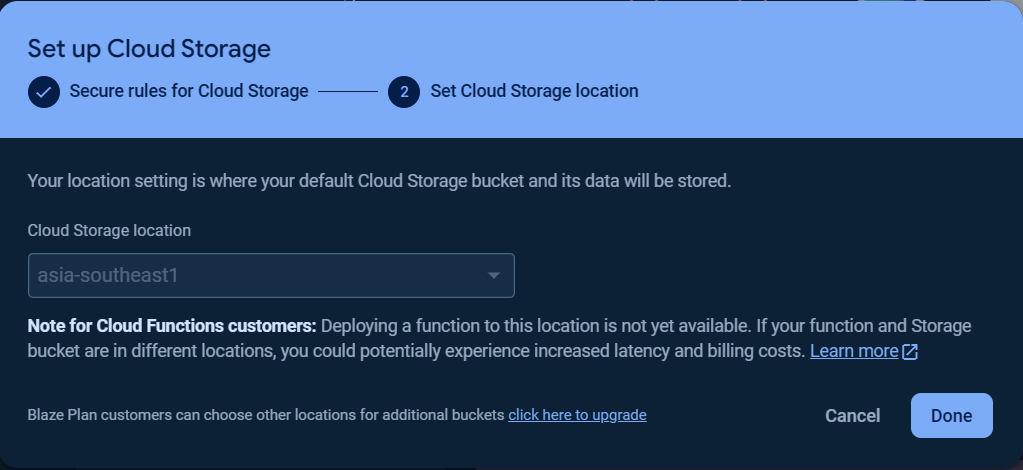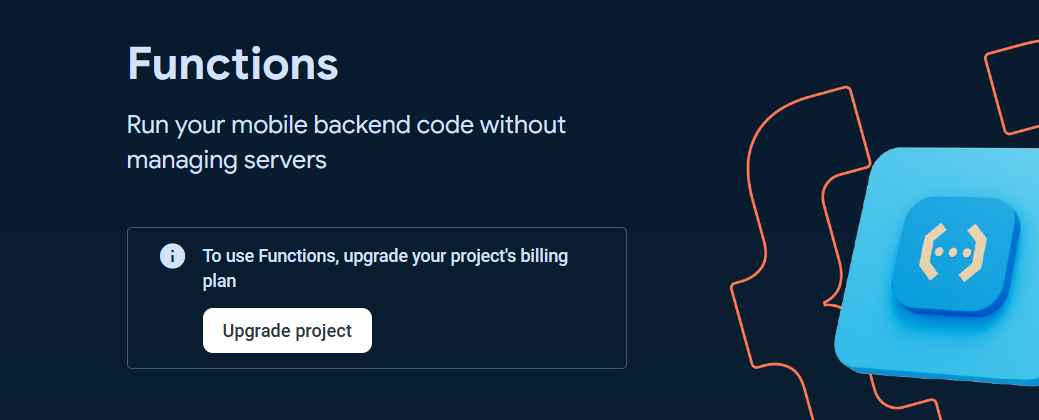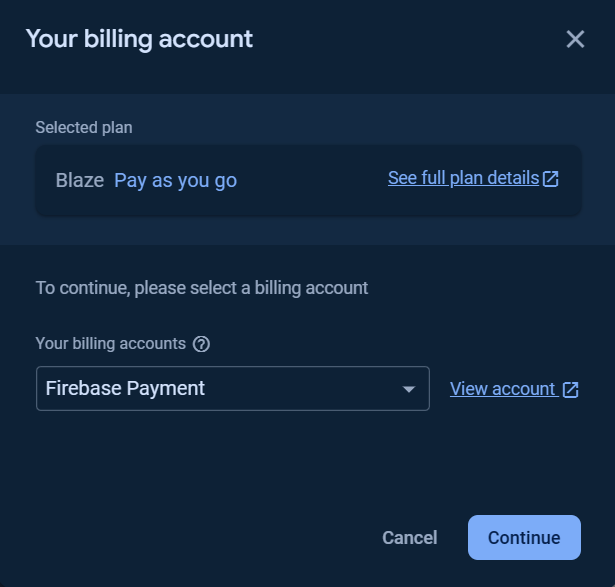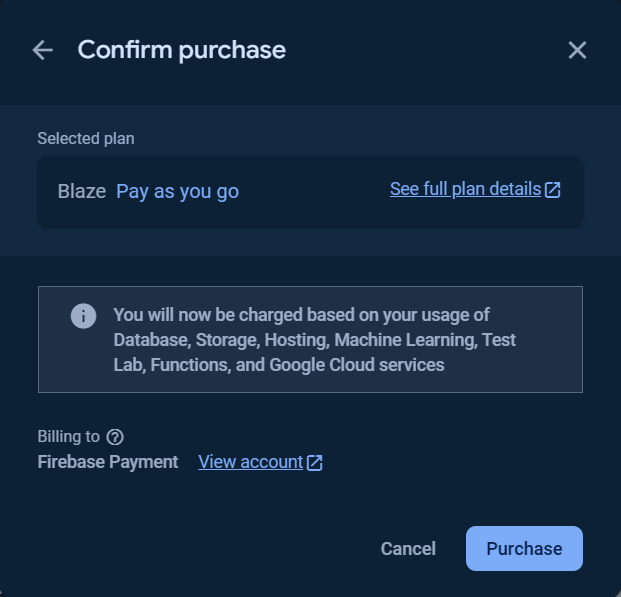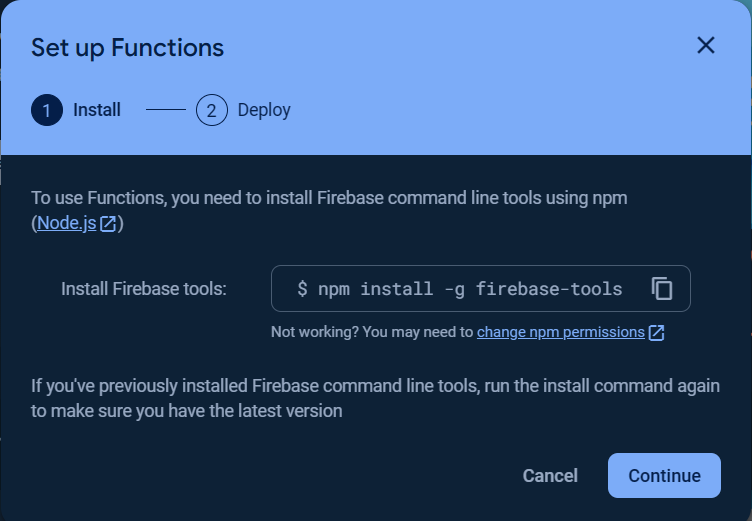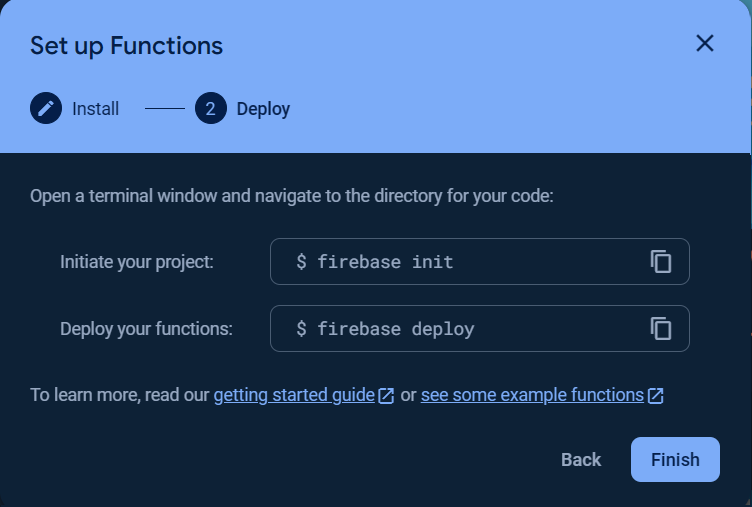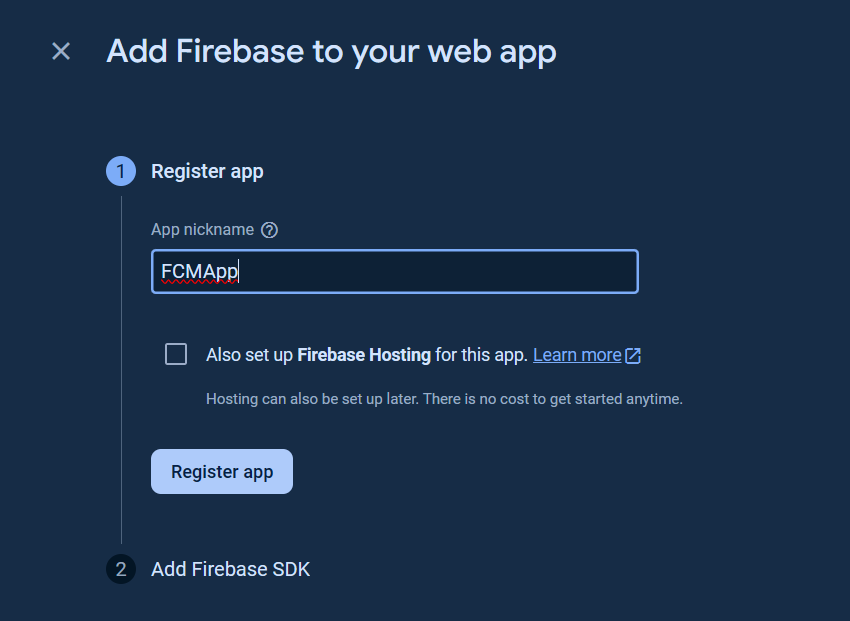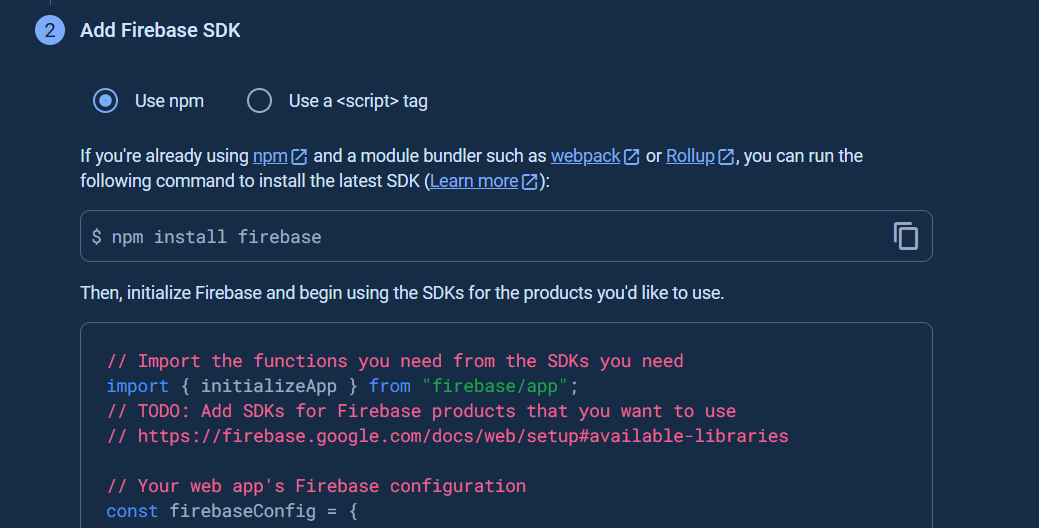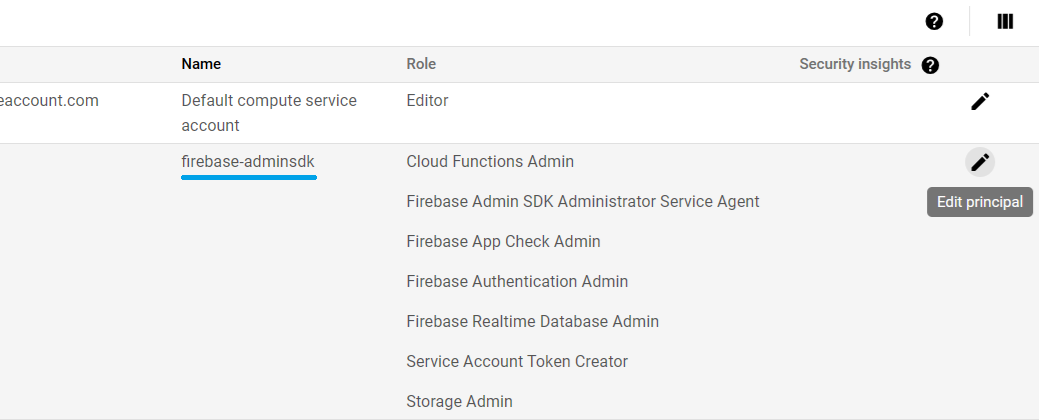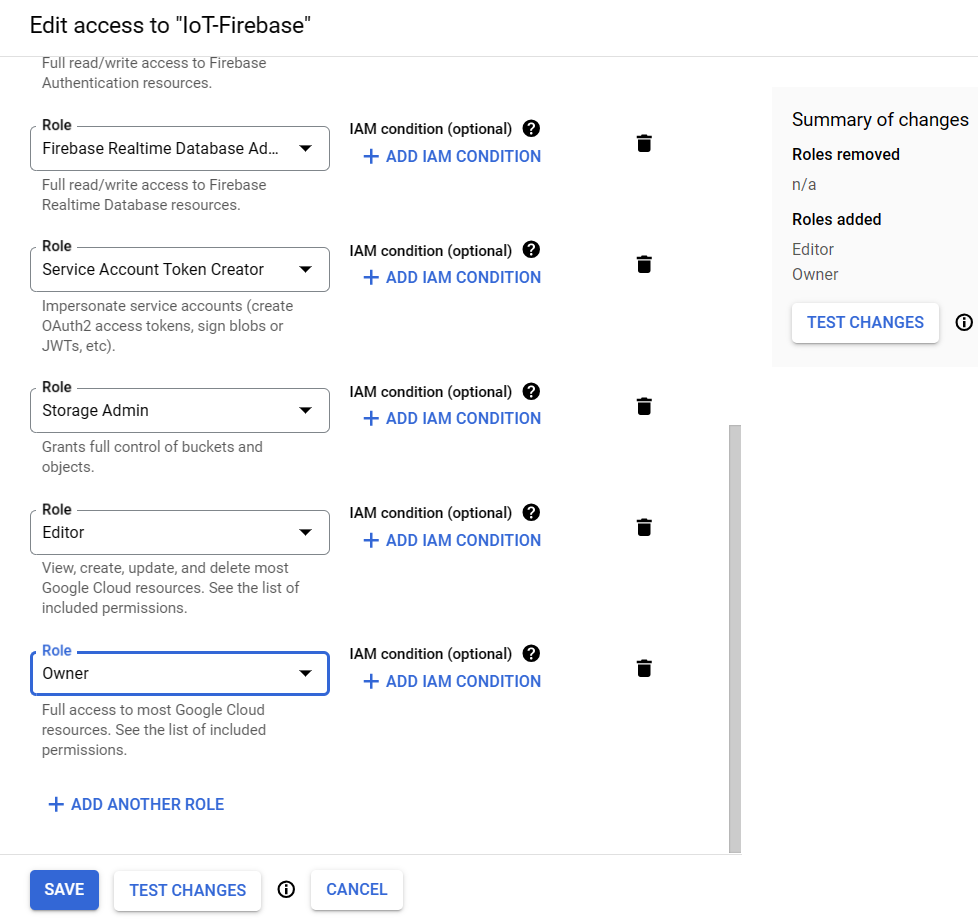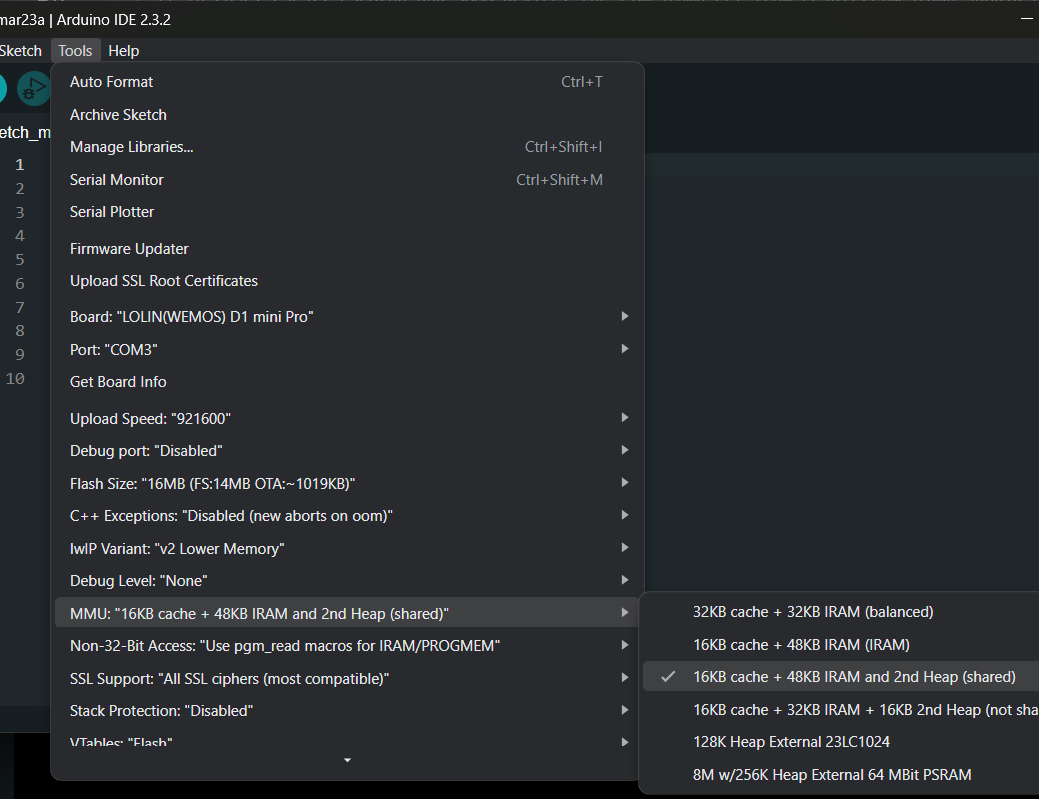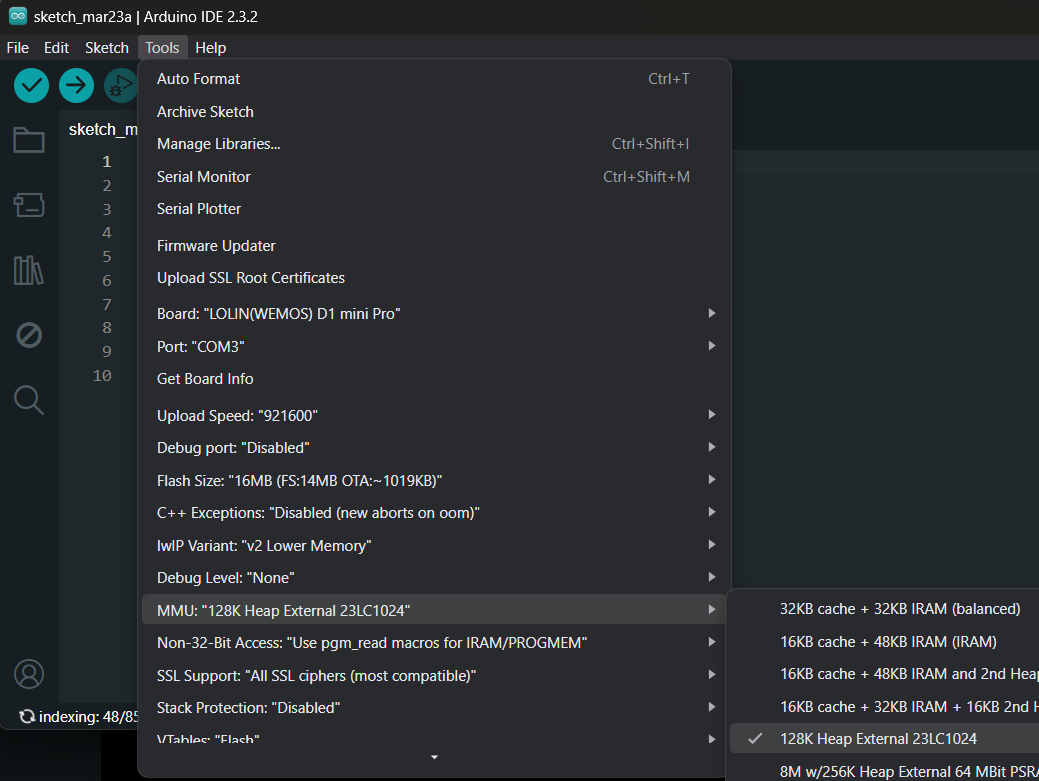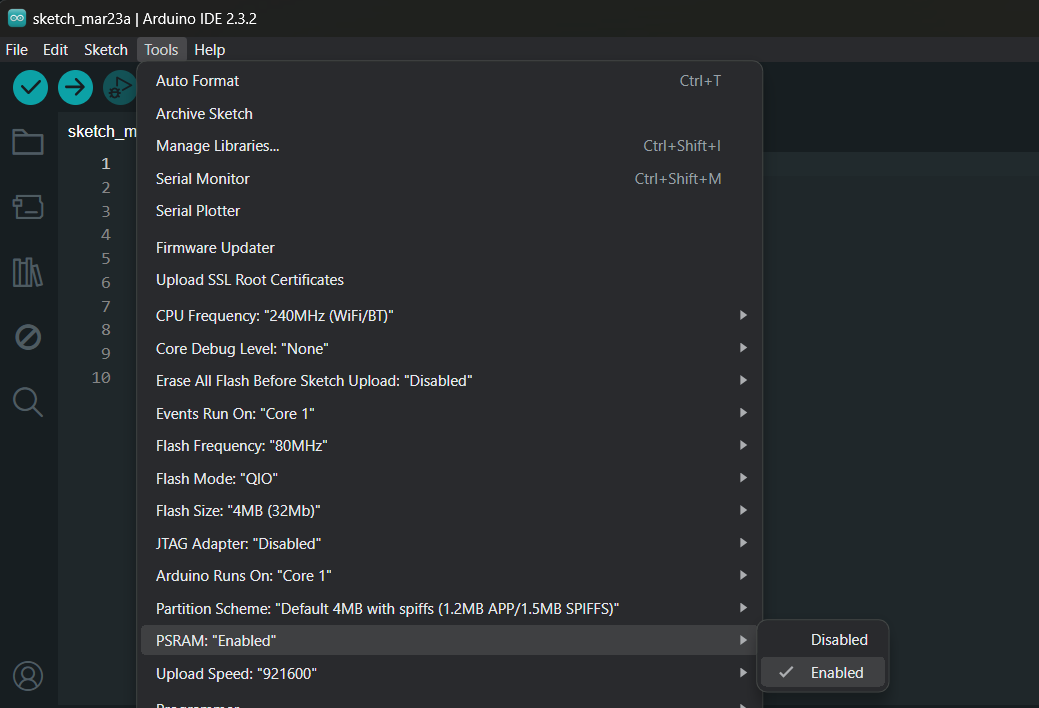Revision 2024-12-11T12:02:01Z
- Introduction
- Frequently Asked Questions
- Supported Devices
- Dependencies
- Incompatability Between Old Firebase Library and This Firebase Library
- Installation
- Usages
- Authentication
- Firebase and Google Services
- Async Queue
- Async Client
- Tasks Timeout
- Async Result
- App Initialization
- CustomAuth (ID Token Authorization Using Service Account)
- ServiceAuth (OAuth2.0 Access Token Authorization Using Service Account)
- UserAuth (User Sign-In Authentication)
- NoAuth (Non-Authentication)
- CustomToken (ID Token Authorization Using Custom Token)
- AccessToken (OAuth2.0 Access Token Authorization)
- IDToken (ID token Authorization)
- LegacyToken (Database Secret)
- Working with Filesystems and BLOB
- Working with Networks
- Examples
- The Value Placeholders
- Firebase Client Class and Static Functions Usage
- Async Client Class Usage
- Firebase App Usage
- Async Result Usage
- Realtime Database Usage
- Realtime Database Result Usage
- Google Cloud Firestore Database Usage
- Google Cloud Messaging Usage
- Firebase Storage Usage
- Google Cloud Storage Usage
- Google Cloud Functions Usage
- Placeholders
- OTA Update
- Project Preparation and Setup
- Memory Options
- Library Build Options
- Sponsors
- License
Async Firebase Client library for Arduino Documentation.
This library is the REST APIs Firebase Client that supports the following Firebase Products and Google Cloud Products.
Firebase Realtime DatabaseCloud Firestore DatabaseCloud MessagingFirebase StorageGoogle Cloud FunctionsGoogle Cloud Storage
This FirebaseClient library was created to solve the following issues in the old Firebase library.
- The confusion of different library names from the same developer and other developers in Library Manager.
- The different main header file name and class name issue.
- The long path issue due to long library name with spaces leads to
VisualMicro IDEcompilation error. - The central settings using only single config class can cause the usage confusion.
- The system time changes causes the auth token expiry period calculation error.
- The internal SSL Client and WiFiClient issue causes the session need to be closed at some interval.
- The
Realtime Databasestream event data can be missing due to the sync read operation. - The async operation is not truely impremented.
Important
If you are new to Firebase Products, please read the Project Preparation and Setup section first.
Important
For ESP8266 device usage, you should read the Memory Options for ESP8266 section for heap selection.
Note
The Cloud Firestore Database data change listening does not support by REST API.
For the FAQ (Frequently Asked Questions), please visit here.
- ESP8266 MCUs based boards
- ESP32 MCUs based boards
- Arduino® MKR WiFi 1010
- Arduino® MKR 1000 WIFI
- Arduino® Nano 33 IoT
- Arduino® MKR Vidor 4000
- Arduino® UNO R4 WiFi (Renesas)
- Arduino® Portenta C33
- Arduino® Nano RP2040
- Arduino® GIGA R1 WiFi
- Arduino® OPTA
- Raspberry Pi Pico (RP2040)
- STM32 MCU based boards (minimum 256k Flash memory)
- Teensy 3.1, 3.2, 3.5, 3.6, 4.0 and 4.1
- LAN8720 Ethernet PHY
- TLK110 Ethernet PHY
- IP101 Ethernet PHY
- ENC28J60 SPI Ethernet module
- W5100 SPI Ethernet module
- W5500 SPI Ethernet module
- SIMCom Modules with TinyGSM
- All Atmega (AVR) devices
This library required the latest device's platform Core SDK to be installed.
Important
Please make sure that the Arduino IDE's Board Manager URL is up to date before you update your device's platform Core SDK. Any issue due to using out dated platform Core SDK is your own risk and does not support by library.
In case the library compile status showed here is passing and your code compilation is error, you should check your libary installation, platform Core SDK installation and the library usage. You cannot install library in the cloud storage virtual folder or sandbox e.g. Microsoft's OneDrive.
Important
If you are using Arduino UNO R4 WiFi, Arduino Portenta C33, Arduino MKR WiFi 1010, Arduino NANO 33 IoT, and Arduino Nano RP2040, please make sure you have already done the following.
- Add the
Realtime Database host root certificateto the board firmware. Plese see Upload SSL root certificates for how to. - Install the WiFiNINA library.
Important
If you are using Arduino® MKR 1000 WIFI, please make sure you have already done the following.
- Add the
Realtime Database host root certificateto the board firmware. - Install the WiFi101 library and uninstall or remove the WiFiNINA library from the libraries folder if it was installed.
Some Arduino MKR devices have the problem when connecting to the Realtime database URL that ends with firebasedatabase.app. Please see Note for Realtime Database location selection for more information.
Warning
Known problem in PlatformIO IDE compilation, if you are using Arduino® UNO R4 WiFi board and using the Firebase Realtime Database, your Arduino® UNO R4 WiFi board will stop with the error: "Fault on interrupt or bare metal(no OS) environment".
This is the error related to the Realtime Database server certificate issue in WiFiS3 library that compiled with PlatformIO IDE even you are already uploaded the SSL root certificates of Realtime Database server using the Arduino IDE Certificate Upload tool.
This problem is only specific to Firebase Realtime Database in Arduino® UNO R4 WiFi which compiled using PlatformIO IDE only.
For Arduino IDE, the ESP8266 Core SDK can be installed through Boards Manager.
For PlatformIO IDE, the ESP8266 Core SDK can be installed through PIO Home > Platforms > Espressif 8266 or Espressif 32.
The RP2040 boards required Arduino-Pico SDK from Earle F. Philhower to be installed.
This library APIs are not compattible with the Firebase-ESP8266, Firebase-ESP32 and Firebase-ESP-Client libraries.
If you are using those libraries, the code should be rewritten.
In addition, some features are changed which included the following.
There is no JSON library included in this FirebaseClient library. If you still prefer to use FirebaseJson functions as in the old library, you have to include it manually in your code.
The FirebaseJson library can be installed via the Arduino's Library Manager and PlatformIO's Library Manager or can be downloaded and install from the FirebaseJson Repository.
For JSON payload, this library will use object_t as a JSON placeholder for the functions represents the JSON object but it does not have serialization/deserialization functionalities. See The Value Placeholders for more information.
The blob and file upload via set, push and update, the byte data will be converted to base64 encoded string and store to the database without the signature string (file, and blob,) prepended to the base64 string as in the old library.
The data on the database that read using the async get function which the blob and file config data assign to the function, will treat as base64 encoded string and will be decoded to byte array using base64 decoder.
Then get the data that contains signature string (file, and blob,) created by old library will lead to the error after base64 decoding.
Due to some pitfalls in the old library's Multipath Stream usage. User is only looking for the JSON parsing data without checking the actual received stream event data, and this library does not include the JSON parser, then this feature will not be implemented in this FirebaseClient library.
The legaycy Firebase Cloud Messaging API was deprecated, only HTTPv1 is supported.
Deploying the Cloud Function from local flash or filesystem source in a single function is not available unless using several fnctions that are available to generate upload url, upload the source (zip file), deploy the function and set the permission.
The lwIP's TCP KeepAlive is not implemented in this FirebaseClient library because it can only be done by the network client (if it was supportd) e.g. WiFiClient in ESP32.
The TCP KeepAlive is currently not available in ESP8266 v3.1.2 at the time of this document writing and it will be available in the newer version after the pull request #8940 was merged.
If you use the core SSL client e.g. WiFiClientSecure or WiFiSSLClient, sush feature is not available.
In the old Firebase library, this feature was done internally by the internal SSL client and WiFiClient integration.
If you want to use this feature and if you use ESP32, you can use ESP_SSLClient library that included in this library and set the WiFiClient as the client.
The following example code is for using TCP KeepAlive with WiFiClient and built-in ESP_SSLClient in ESP32.
#include <lwip/sockets.h> // For lwIP TCP/IP sockets
bool tcp_keep_alive_set = false;
int keepAlive = 1000; // Milliseconds
int keepIdle = 5; // Seconds
int keepInterval = 5; // Seconds
int keepCount = 1;
WiFiClient basic_client;
ESP_SSLClient ssl_client;
void setup()
{
ssl_client.setClient(&basic_client);
ssl_client.setInsecure();
}
void loop()
{
// TCP KeepAlive should be set once after server was connected
if (basic_client.connected())
{
if(!tcp_keep_alive_set)
{
tcp_keep_alive_set = true;
basic_client.setSocketOption(IPPROTO_TCP, TCP_KEEPALIVE, (void *)&keepAlive, sizeof(keepAlive));
basic_client.setSocketOption(IPPROTO_TCP, TCP_KEEPIDLE, (void *)&keepIdle, sizeof(keepIdle));
basic_client.setSocketOption(IPPROTO_TCP, TCP_KEEPINTVL, (void *)&keepInterval, sizeof(keepInterval));
basic_client.setSocketOption(IPPROTO_TCP, TCP_KEEPCNT, (void *)&keepCount, sizeof(keepCount));
// Or simpler functions in new ESP32 core
// basic_client.setOption(TCP_KEEPALIVE, &keepAlive);
// basic_client.setOption(TCP_KEEPIDLE, &keepIdle);
// basic_client.setOption(TCP_KEEPINTVL, &keepInterval);
// basic_client.setOption(TCP_KEEPCNT, &keepCount);
}
}
else
{
tcp_keep_alive_set = false;
}
}
The PSRAM in this library was enabled by default but it was only used partly in tempolary buffer memory allocation.
The server certificate verification can be done with the SSL Client on user side.
The filesystem features e.g. types (SD/Flash), initialization and operations should be done on user side.
At Arduino IDE, go to menu Sketch -> Include Library -> Manage Libraries...
In Library Manager Window, search "firebase" in the search form then select "FirebaseClient".
Click "Install" button.
For PlatformIO IDE, using the following command.
pio lib install "FirebaseClient""
Or at PIO Home -> Library -> Registry then search FirebaseClient.
For Arduino IDE, download zip file from the repository (Github page) by select Code dropdown at the top of repository, select Download ZIP
From Arduino IDE, select menu Sketch -> Include Library -> Add .ZIP Library....
Choose FirebaseClient-main.zip that previously downloaded.
Rename folder from FirebaseClient-main to FirebaseClient.
Go to menu Files -> Examples -> FirebaseClient and choose one from examples.
For Arduino IDE, the Arduino-Pico SDK can be installed from Boards Manager by searching pico and choose Raspberry Pi Pico/RP2040 to install.
For PlatformIO, the Arduino-Pico SDK can be installed via platformio.ini
[env:rpipicow]
platform = https://github.com/maxgerhardt/platform-raspberrypi.git
board = rpipicow
framework = arduino
board_build.core = earlephilhower
monitor_speed = 115200
board_build.filesystem_size = 1mSee this Arduino-Pico SDK documentation for more information.
Note
You cannot install Arduino IDE and Arduino library in Microsoft's OneDrive folder because the OneDrive folder is the sandbox or virtual folder instead of real folder which causes the path error when compilation.
Based on the async library design , there are no central configuration class (FirebaseConfig) and all-in-one data containter class (FirebaseData) as in the old Firebase library.
This library provides the managed classes that are used in different purposes i.e. the classes that used to hadle the sync and async tasks and to use as a container (data provider) for authentication credentials, networking and filesystems configurations, and async task result.
For the concept and basic usage understanding, you should read this documentation thoroughly.
Important
For new Firebase users, please read the Project Preparation and Setup section.
The authentication classes provide the authentication data for authentication and authorization using service account, sign-in credentials and auth tokens.
The REST API client (this library) will use the short-lived token for authorization.
This authorization token will be expired in 60 minutes or 3600 seconds which determined by the issuer (Google).
The authorization token will be refreshed or re-created automatically as long as the async authentication task handler (FirebaseApp) was running in the main loop without blocking by user code.
Warning
Most examples use the token for autorization. The token will be refreshed/recreated automatically as mentioned above.
The FirebaseApp event will show the authentication processes that are running behind. The authentication task handler will prepare and maintain the authorization token to be valid. Google may deny the access from the client that sending the request with the expired authorization token.
Anyway, library also provides the option for less or non-secure usage which no authorization tokens are involved i.e. using database secret (LegacyToken) for Realtime database and using no authorization token (NoAuth) if the security rules are allowed (see the Project Preparation and Setup section).
You can get started using this library with these simple Realtime database examples which using database secret and no token, which are similar to the other legacy Firebase library usage.
For secure and more elaborate usages, you have to read the documentation thouroughly and follow the library provided examples to get familiar with the library usage.
The authorization token types that can be used for Firebase/Google APIs authorization are ID token and access token which will be called shorter as auth tokens in this library.
The following authentication/authorization classes generate and hold the ID token to be used in the authorization requests.
-
The
UserAuthclass is forUser Sign-in authenticationwhich is the only authentication method that allows user to sign in for confirming the identity of a user and it provides theID tokento use in the authorization requests. -
The
IDTokenclass is forID token authorization, which theID tokenthat obtained from the user authentication process in other applications will be used for authorization request. -
The
CustomAuthclass is forID token authorization using service account. TheService Accountwill be used for user authentication and it also provides theID tokenthat uses in the authorization requests. This allows the client to acess the services on behalf of user with customUID. -
The
CustomTokenclass is forID token authorization using custom token, which the custom claims signedJWTtoken obtained from the user authentication process in other applications will be used in the authorization requests.
The following authentication/authorization classes generate and hold the access token and secret key for Firebase/Google APIs privilege access.
-
The
ServiceAuthclass is forOAuth2.0 access token authorization using service account. TheService Accountwill be used for user authentication and it also provides theaccess tokenthat uses in the authorization requests. -
The
AcessTokenclass is forOAuth2.0 access token authorization, which theaccess tokenfrom the user authentication process in other applications will be used in the authorization requests. -
The
LegacyTokenclass that holds thedatabase secretthat used as thesecret keyforRealtime Databaseprivilege access.
The following class provides non-authentication access.
- The
NoAuthclass is for non-authentication acesss.
The User Sign-in authentication requires the Email/Password Sign-in provider to be enabled in your project
The Users tab in the Authentication page in the Firebase console shows the list of users that are signed up or added.
The user management using this library are also available.
The sucurity rules can be used for user accessing control.
Visit Understand Firebase Realtime Database Security Rules, Get started with Cloud Firestore Security Rules and Get started with Firebase Security Rules to learn more about security rules.
In OAuth2.0 access token authentication using service account via ServiceAuth and ID token authorization using service account via CustomAuth involve the JWT token generation and RSA private key signing.
The valid time is needed in the JWT token generation process, the time status callback function that takes the user defined timestamp will be used in both ServiceAuthand CustomAuth classes.
The details for these authentication classes will be discussed later in the App Initialization section.
This library used the internal millis timer to handle the token time to live. Then device time setting is not requierd in most authentication types. Only ServiceAuth and CustomAuth that required the valid time through the time status callback function.
The Firebase and Google Services classes that are available in this library are included the following.
-
RealtimeDatabase class provides the
Realtime Databasefunctions. -
Firestore::Databases class provides the
Cloud Firestore Databasefunctions. -
Firestore::Documents class provides the
Cloud Firestore Documentfunctions. -
Firestore::CollectionGroups::Indexes class provides the
Cloud Firestore CollectionGroups's Indexesfunctions. -
Messaging class provides the
Cloud Messagingfunctions. -
Storage class provides the
Firebase Storagefunctions. -
CloudStorage class provides the
Google Cloud Storagefunctions. -
CloudFunctions class provides the
Google Cloud Functionsfunctions.
All sync and async tasks are managed using FIFO queue in async client. The task in the queue will refer to slot in this library.
The queue is task based or session based which stores the HTTP request and response data which used for a task.
The memory used for a task that stores in the queue is approximately 1 k. Then in order to limit the memory usage in an async client, this library allows 10 or 20 tasks by default that can be stored in the queue at a time.
The maximum queue size can be set via the build flag FIREBASE_ASYNC_QUEUE_LIMIT or macro that defined in src/Config.h or in your own defined config at src/UserConfig.h.
The below image shows the ordering of tasks that are inserted or added to the queue. Only the first task in the queue will be executed.
When the authentication task was required, it will insert to the first slot of the queue and all tasks are cancelled and removed from queue to reduce the menory usage unless the SSE mode (HTTP Streaming)task that stopped and waiting for restarting.
The authentication task has the highest priority and SSE mode (HTTP Streaming) task has the lowest priority in the queue.
The sync task will be inserted to the first slot in the queue but above the authentication task.
When SSE mode (HTTP Streaming) task was currently stored in the queue, the new sync and async tasks will be inserted below it in the queue.
The new task can be cancelled in case the queue is full or the another SSE mode (HTTP Streaming) task is already stored in the queue.
The error code -118 (FIREBASE_ERROR_OPERATION_CANCELLED) or "operation was cancelled" will show in this case.
The number of tasks that currently stored in the queue can be obtained from AsyncClientClass::taskCount() function.
The running task will be removed from the queue when operation is finished or error occurred.
The SSE mode (HTTP Streaming) task will run continuously and repeatedly as long as the async task handler e.g. <FirebaseServices>::loop() and/or FirebaseApp::loop() (if it used the same async client) are running in the loop function.
The SSE mode (HTTP Streaming) is a kind of infinite task which the server connection was kept alive and waiting for the incoming event data.
When SSE mode (HTTP Streaming) task is currently running and new sync or async task is added to the queue, the SSE mode (HTTP Streaming) task will be stopped (but remains in the queue) as another task was inserted in to the first slot, the SSE mode (HTTP Streaming) task will be restart when another task is finished.
When the SSE mode (HTTP Streaming) task was timed out because of network or any delay or blocking operation, "stream timed out" error will show, it will reconnect automatically.
If Realtime database Stream was unable to connect or reconnect, please see the FAQ.
You cannot run more than one infinite task in the same async client's queue as one infinite task is never finished, and another infinite task is never started.
To run multiple SSE mode (HTTP Streaming) tasks, you have to run each task in different async client. Please note that SSE mode (HTTP Streaming) task consumes memory all the time while it is running. Running many SSE mode (HTTP Streaming) tasks may not possible because of out of memory especially in ESP8266 and SAMD devices.
The async task handler will kepp the async tasks running as long as it places in the main loop function.
Important
Do not underestimate the important the async task handler location and usage. The non-async third-party library and user blocking code, delay function and placing the async task handler in the millis code blocks, will cause the async task to run slowly and the timed out will be occurred. The SSE mode (HTTP Streaming) task will not update in realtime.
The async task handler i.e. FirebaseApp::loop(), RealtimeDatabase::loop(), Storage::loop(), Messaging::loop(), CloudStorage::loop() and CloudFunctions should be placed inside the main loop function, at the top most of the loop.
Note
Even the authentication task can run asynchronously, you can run it synchronously by waiting until the FirebaseApp::ready() function returns true.
Note
Since v1.2.1, you can set the filter to filter the Stream events in SSE mode (HTTP Streaming) task.
In Raspberry Pi Pico W, its WiFiClientSecure memory used for the transmit and receive buffers are adjustable (512 to 16384) and you have enough memory to run many tasks concurrency using different async clients.
In ESP32 device, its WiFiClientSecure memory usage cannot be adjusted, it requires at least 50 k per connection (37 k used for mbedTLS memory allocation) and only three WiFiClientSecure(s) can be defined.
Alternatively, for ESP32 device, you can use ESP_SSLClient that was included in this library. It works similar to ESP8266's WiFiClientSecure and the memory used for the transmit and receive buffers are adjustable (512 to 16384). See the Stream Concurentcy example for how to run many tasks concurrency.
The useful of using ESP_SSLClient is it uses PSRAM by default, you can use it in ESP32 and ESP8266 modules that have PSRAM or connected to external PSRAM.
In case of ESP8266 that connected to external PSRAM, you have enough RAM for running many tasks concurrency, and you can run Stream Concurentcy example without memory problem.
For how to use PSRAM in ESP32 and ESP8266 devices, see Memory Options section.
In case using ESP8266 without PSRAM and you want to reduce the memory usage, you can use WiFiClientSecure or ESP_SSLClient with minimum receive and transmit buffer size setting: 1024 for receive buffer and 512 for transmit buffer.
Note that, because the receive buffer size was set to minimum safe value, 1024, the large server response may not be able to handle.
Warning
In ESP32, when using WiFiClient with ESP_SSLClient classes, WiFiClient was unable to detect the server disconnection in case server session timed out and the TCP session was kept alive for reusage in most tasks in this library. The error Failed while waiting for the engine to enter BR_SSL_SENDAPP. can be occurred. The TCP session timeout in seconds (>= 60 seconds) can be set via ESP_SSLClient::setSessionTimeout.
The SSL client is required to handle network and server connection as was set to the aync client class constructor.
The async client operates the SSL client via its pointer.
The async client also create the instances of async data and stored as a slot in its queue.
The async data created in the async client queue, holds the header and payload of the http request and response.
Warning
The async client and its SSL Client that used for async tasks, need to be defined globally otherwise the dangling pointer problem will be occured.
The SSL Client is a kind of sync or blocking Client that takes time during SSL/TLS handshake.
The async SSL client can be used with the async client but it is currently experimental.
To stop and cancel the tasks, use AsyncClientClass::stopAsync() to stop only running task or AsyncClientClass::stopAsync(true) to stop all tasks.
In case UID is provided with the async task (see Async Result section below), you can stop that task directly with AsyncClientClass::stopAsync(<uid>).
You cannot stop the authentication task unless you can remove the functions; FirebaseApp::loop() and/or FirebaseServicesApps::loop()(if the same async client was used in FirebaseServicesApps and FirebaseApp) from the loop function.
Warning
The numbers of async clients that can be used, the numbers of the tasks stored in the async client's queue will be limited which depends on the device free memory.
The async client class (AsyncClientClass) constructors can have no parameter and two parameters i.e. SSL Client and network config data (network_config_data). The network config data can be obtained from the networking classes via the static function called getNetwork.
Almost network config data are copied to use internally then the network class object can be defined locally except for the network class object that takes the pointer as parameter.
This example shows how the async client is defined.
WiFiClientSecure ssl_client;
DefaultNetwork network;
AsyncClientClass aClient(ssl_client, getNetwork(network));The network_config_data that obtained from network classes will be copied for use internally while the SSL Client pointer was used. Then SSL Client should be existed while using the AsyncClientClass.
Warning
To prevent dangling pointer issue, the SSL Client should be defined at the same usage scope as AsyncClientClass.
For the details of networking class, see Working with Networks section.
Since version 1.3.3, the network interfaces that works with async client chan be changed or set.
The network interface class can be changed with the function AsyncClientClass::setNetwork.
The function parametes are included the following.
AsyncClientClass::setNetwork(<ssl_client>, <network_config_data>);The SSL client set here should work for the type of network set.
The following code shows how to change the network interface in ESP device between WiFi and Ethernet.
EthernetClient ethernet_client;
ESP_SSLClient ethernet_ssl_client;
WiFiClientSecure wifi_ssl_client;
EthernetNetwork ethernet_network(...);
DefaultNetwork wifi_network;
AsyncClientClass aClient(wifi_ssl_client, getNetwork(wifi_network));
void setup()
{
// Connect WiFi code here
ethernet_ssl_client.setClient(ðernet_client);
ethernet_ssl_client.setInsecure();
// Check network status
if (!aClient.networkStatus())
{
// Change to Ethernet network.
aClient.setNetwork(ethernet_ssl_client, getNetwork(ethernet_network));
}
}Please see NetworkSwitching examples for more detail.
In case async task, the send timeout and read timeout are 30 seconds by default and it cannot be changed.
In case sync task, the timeouts can be set via AsyncClientClass::setSyncSendTimeout and AsyncClientClass::setSyncReadTimeout for send timeout and read timeout respectively.
This library provides the class object called async result (AsyncResult) which is used as a container that provides 4 types of information: App Events (app_event_t), Server Response and Event Data, Debug Information and Error Information and will be discussed later.
This library does not use Serial port to print any message internally. All information will be obtained from AsyncResult which you can choose which information you want to read or print.
The information of App Events (app_event_t)'s authentication task can be obtained from AsyncResult::appEvent()
The information of Server Response and Event Data included the payload, SSE mode (HTTP Streaming) event-data, status and header data.
The Error Information (FirebaseError) can be obtained from AsyncResult::error().
The Debug Information (String) can be obtained from AsyncResult::debug().
There are four use cases of async result: async task with callback function, async task without callback function, sync task with external async result and sync task with internal default async result.
- User provided async result in case async task (without callback function).
The async result was defined by user and passed to the async tasks as the following.
FirebaseApp::setAsyncResult(<AsyncResult>); // Recommend setting AsyncResult via initializeApp instead.initializeApp(<AsyncClientClass>, <FirebaseApp>, <user_auth_data>, <AsyncResult>); // Since v1.2.0RealtimeDatabase::get(<AsyncClientClass>, <path>, <options>, <AsyncResult>);- From the instance of async data in case async task (with callback function).
The async result instance was created inside the async task and can be accessed via the async result callback function that passed to the async tasks as the following.
FirebaseApp::setCallback(<AsyncResultCallback>); // Recommend setting AsyncResultCallback via initializeApp instead.initializeApp(<AsyncClientClass>, <FirebaseApp>, <user_auth_data>, <AsyncResultCallback>, <UID>); // Since v1.2.0RealtimeDatabase::get(<AsyncClientClass>, <path>, <options>, <AsyncResultCallback>);- User provided async result in case sync task.
In this case, the external async result was set/unset to use with the sync task via the following functions.
AsyncClientClass::setAsyncResult(<AsyncResult>); // Since v1.2.1AsyncClientClass::unsetAsyncResult(); // Since v1.2.1If no async result was set (unset) for sync task, the internal async result will be used and shared usage for all sync tasks.
- From the default async result created in the async client in case sync task.
This case, the internal async result in the async client will be used and shared usage for all sync tasks.
In case 1, the async result (AsyncResult) shall be defined globally because it needs the containter to keep the result while running the async task.
In case 1, when the async result was used in the loop function to take or print information from it. It should follow the below recommendation for checking its status before processing the data to avoid processing or printing the same data.
To check the
App Eventchanges, you should useAsyncResult::isEvent().To check the
Server Response and Event Datachanges, you should useAsyncResult::available().To check whether
Erroris occurred, you should useAsyncResult::isError().To check when
Debuginformation is available, you should useAsyncResult::isDebug().
In case 2, the async client (AsyncClientClass) where the async data was created and insert in to its queue, shall be defined globally because the async data should be existed while running the async task.
In case 2, the async result which can be accessed via the async result callback function is dynamically created and it will be deconstructed when the async task is finished or stopped.
Then you may need to copy the async result that provided in the async result callback function to use anywhere when the async result instance was deconstructed.
In case 2, you can set the UID (unique identifier) to identify the task. The UID is any string that user defined and it is useful to identify the tasks when the same AsyncResultCallback was set for various async tasks.
You can get the UID from AsyncResult via AsyncResult::uid().
Note
You cannot set UID to the AsyncResult directly as it will be overwritten, then the UID from the AsyncResult that defined by user in case 1 will always be the default UID.
Note
The async client used in authentication task should be defined globally as it runs asynchronously.
Caution
Please don't run your code inside the async callback function because it uses stack memory.
The authentication task information or app_event_t can be obtained from app_event_t AsyncResult::appEvent().
The event codes (firebase_auth_event_type enum) return from AsyncResult::appEvent().code() are included the following.
-
auth_event_uninitializedor 0, when authentication task is not initialized. -
auth_event_initializingor 1, when authentication task is begin. -
auth_event_signupor 2, when the user sign up process is begin. -
auth_event_send_verify_emailor 3, when the user verification email sending process is begin. -
auth_event_delete_useror 4, when the user deletion process is begin. -
auth_event_reset_passwordor 5, when the user reset password process is begin. -
auth_event_token_signingor 6, when theJWTtoken signing process is begin. -
auth_event_authenticatingor 7, when the google API authorization token request is begin. -
auth_event_auth_request_sentor 8, when the a authorization token request was sent. -
auth_event_auth_response_receivedor 9, when a authorization token was received. -
auth_event_readyor 10, when the authorization token is ready. -
auth_event_erroror 11, when error was occurred in the authentication process.
The event strings return from String AsyncResult::appEvent().message() which give the event detail are included the following.
-
"undefined"when authentication task is not initialized. -
"initializing"when authentication task is begin. -
"sign up"when the user sign up process is begin. -
"send verification email"when the user verification email sending process is begin. -
"delete user"when the user deletion process is begin. -
"reset password"when the user reset password process is begin. -
"token signing"when theJWTtoken signing process is begin. -
"authenticating"when the google API authorization token request is begin. -
"auth request sent"when the a authorization token request was sent. -
"auth response received"when a authorization token was received. -
"ready"when the authorization token is ready. -
"error"when error was occurred in the authentication process.
The generic server response can be obtained from AsyncResult via the following member functions.
-
String AsyncResult::payload()returns the copy of server response payload string. -
const char *AsyncResult::c_str() constreturns the pointer to the internal response payload string buffer. -
bool AsyncResult::available()returns true if server response payload was received. -
String AsyncResult::path()returns the path of the resource of the request. -
String AsyncResult::etag()returns the Etag of the server response headers.
If the size of payload string from the async reseut is large, to access the internal string buffer directly, use AsyncResult::payload().c_str() instead.
The specific Realtime Database server response payload and SSE mode (HTTP Streaming) event data (RealtimeDatabaseResult) can be obtained from AsyncResult::to<RealtimeDatabaseResult>() which are included the following.
-
bool RealtimeDatabaseResult::isStream()returns true if the result is fromSSE mode (HTTP Streaming)task. -
String RealtimeDatabaseResult::event()returns theSSE mode (HTTP Streaming)event type strings includeput,patch,keep-alive,cancelandauth_revoked. -
String RealtimeDatabaseResult::dataPath()returns theSSE mode (HTTP Streaming)event data path which is the relative path of the changed value in the database. The absolute path of the changed value can be obtained from the concatenation ofAsyncResult::path()andRealtimeDatabaseResult::dataPath()e.g.AsyncResult::path() + "/" + RealtimeDatabaseResult::dataPath(). -
realtime_database_data_type RealtimeDatabaseResult::type()returns therealtime_database_data_typeenum (see below) represents the type ofRealtime Databaseresponse payload and event data (HTTP Streaming). -
RealtimeDatabaseResult::name()returns the name (random UID) of the node that will be creaated after fromRealtimeDatabase::Push.
The realtime_database_data_type enums are included the following.
-
realtime_database_data_type_undefinedor -1. -
realtime_database_data_type_nullor 5. -
realtime_database_data_type_integeror 1. -
realtime_database_data_type_floator 2. -
realtime_database_data_type_doubleor 3. -
realtime_database_data_type_booleanor 4. -
realtime_database_data_type_stringor 5. -
realtime_database_data_type_jsonor 6. -
realtime_database_data_type_arrayor 7.
The Realtime Database server response payload and HTTP Streaming event data can be converted to the values of type T via RealtimeDatabaseResult::to<T>() e.g. boolean, integer, float, double and string.
The following is the example for how to convert the payload to any value.
// aResult is the AsyncResult object.
RealtimeDatabaseResult &databaseResult = aResult.to<RealtimeDatabaseResult>();
bool boolVal = databaseResult.to<bool>();
int intVal = databaseResult.to<int>();
float floatval = databaseResult.to<float>();
double doubleVal = databaseResult.to<double>();
String stringVal = databaseResult.to<String>();The error information (FirebaseError) from the async result can be obtained from FirebaseError AsyncResult::error() are included the following.
-
int AsyncResult::error().code()returns the numeric error of two major sources:TCP Client ErrorandServer Response Error. TheTCP Client Errorwas defined here and theServer Response Errorwas defined here. -
String AsyncResult::error().message()returns the error string based on theAsyncResult::error().code()which in caseServer Response Error, theunauthorized,precondition failed (ETag does not match)andHTTP Status xxxcan be returned. In caseTCP Client Error, the predefined messages can be returned.
The debug information (String) from the async result can be obtained from String AsyncResult::debug() which is currently availabele when getting current time, starting and closing the server connection and information about network connection process.
The Firebase app (FirebaseApp) is the class that used to handle the authentication task.
The processes of App intitialization are the following
-
User calls
initializeApp(...)to initialize the authentication task handler. -
User calls
FirebaseApp::getApp<T>(<FirebaseServiceApp>)to bind the authentication task handler with the Service apps before use.
User can unbind the FirebaseApp or authentication task handler from the Service app by calling resetApp() from the app.
The authentication/authorization classes also mentioned in the earlier section will be discussed here.
The following authentication/authorization classes generate and hold the ID token which used in the authorization requests.
The following classes provide the privilege access to the Firebase/Google APIs.
The following class provides for non-authentication acesss.
The getAuth function is the function that provides the user auth data (user_auth_data) from the authentication/authorization classes.
Note
The user auth data that passes to FirebaseApp will be coppied to use internally, then changing the credentials in authentication/authorization classes after the FirebaseApp was initialized will not change the internal user auth data. You have to re-initiate the FirebaseApp again for apply the changes.
The user UID can be obtained from FirebaseApp::getUid(). Don't be confused with the task UID that described earlier.
The auth token (ID token and access token) and legacy token can be obtained from FirebaseApp::getToken().
The refresh token (when using authentication/authorization classes that provided the ID token) can be obtained from FirebaseApp::getRefreshToken().
To initialize the FirebaseApp, call Firebase::initializeApp or static function initializeApp which the functions parameters are included the following.
Initialize with the callback (Since v1.2.0).
initializeApp(<AsyncClientClass>, <FirebaseApp>, <user_auth_data>, <AsyncResult>);Initialize with the AsyncResult without the callback (Since v1.2.0)
initializeApp(<AsyncClientClass>, <FirebaseApp>, <user_auth_data>, <AsyncResultCallback>, <UID>);<AsyncClientClass> The async client to work for authentication/authorization task.
<FirebaseApp> The FirebaseApp class object to handle authentication/authorization task.
<user_auth_data> The user auth data (user_auth_data) which is the struct that holds the user sign-in credentials and tokens that obtained from the authentication/authorization classes via getAuth as described earlier.
<AsyncResult> The Async Result. See Async Result section.
<AsyncResultCallback> The Async Result Callback function. See Async Result section.
<UID> The Task UID. See Async Result section.
Since v1.2.11, to deinitialize the FirebaseApp, call Firebase::deinitializeApp or static function deinitializeApp which the functions parameters are included the following.
initializeApp(<FirebaseApp>);<FirebaseApp> The FirebaseApp class object to handle authentication/authorization task.
The service account credentials and json file can be used for authentication.
The CustomAuth class parameters are included the following.
CustomAuth::CustomAuth(<TimeStatusCallback>, <api_key>, <client_email>, <project_id>, <private_key>, <user_id>, <scope>, <claims>, <expire>)CustomAuth::CustomAuth(<TimeStatusCallback>, <file_config_data>, <api_key>, <user_id>, <scope>, <claims>, <expire>)<TimeStatusCallback> The time status callback that provides the UNIX timestamp used to set the issue time and expiration time in the JWT token payload.
<file_config_data> The filesystem data (file_config_data) obtained from FileConfig class object of service account key file.
<api_key> The web API key of the project.
<client_email> The service account client Email.
<project_id> The service account project ID.
<private_key> The service account private key.
<user_id> The user ID.
<scope> The OAuth scopes.
<claims> The OAuth claims.
<expire>The expiry period in seconds (less than 3600), 3300 is the default value.
This type of authentication is used when privilege (admin rights) access is needed.
The service account credentials and json file can be used for authentication.
This authentication type can be used in all Firebase services apps. Then in case various Firebase services application, to reduce the code complexity, you can define single global FirebaseApp and ServiceAuth for all your Firebase services used in your code.
The single global FirebaseApp with ServiceAuth may not meet your requirement when you want to sign in as a user. In this case you should define the FirebaseApps specific for different authentication types.
The ServiceAuth class parameters are included the following.
ServiceAuth::ServiceAuth(<TimeStatusCallback>, <client_email>, <project_id>, <private_key>, <expire>)ServiceAuth::ServiceAuth(<TimeStatusCallback>, <file_config_data>, <expire>)<TimeStatusCallback> The time status callback that provides the UNIX timestamp used to set the issue time and expiration time in the JWT token payload.
<file_config_data> The filesystem data (file_config_data) obtained from FileConfig class object of service account key file.
<client_email> The service account client Email.
<project_id> The service account project ID.
<private_key> The service account private key.
<expire> The expiry period in seconds (less than 3600), 3300 is the default value.
Note
The refresh token is not available for OAuth 2.0 JWT Bearer Flow.
The auth token need to be re-created instead of refreshing.
The CustomAuth and ServiceAuth classes required the JWT token processor which is done via the function JWTClass::loop(<auth_data_t*>) which accepts the pointer to the auth_data_t from the FirebaseApp::getAuth().
The examples in this library, the static object of JWTClass called JWT will be used to save the stack memory usage and it is not thread safe when using in multi-threaded operations (multi-FirebaseApp) because of sharing internal jwt_token_data_t.
The following is the example code for JWT token processor that should be executed inside the main loop.
JWT.loop(app.getAuth());For thread safety, you have to define JWTClass for each FirebaseApp via FirebaseApp::setJWTProcessor(<JWTClass>), before calling initializeApp.
The following is the partial code example for setting the JWT token processor to the FirebaseApp.
FirebaseApp app;
JWTClass jwtProcessor;
void setup()
{
app.setJWTProcessor(jwtProcessor);
initializeApp(...);
}
void loop()
{
jwtProcessor.loop(app.getAuth());
app.loop();
}The user name and password credentials are used for authentication. You can save the credentials to file and load it with the constructor.
The UserAuth class parameters are included the following.
UserAuth::UserAuth(<api_key>, <user_email>, <user_password>, <expire>)UserAuth::UserAuth(<file_config_data>)UserAuth::save(<file_config_data>)<api_key> The API key which can be obtained from Firebase console > Project Overview > Project settings.
<user_email> The Email of user in the project.
<user_password>The password of user in the project.
<expire>The expiry period in seconds (less than 3600), 3300 is the default value.
<file_config_data> The filesystem data (file_config_data) obtained from FileConfig class object of file that the UserAuth credentials will be saved to or read from.
The NoAuth class allows you to access the Firebase/Google APIs without authorization token. There is no parameters in its class constructor.
This required read and write access in Firebase/Google APIs.
It should be used for testing only.
The API key and the custom token credentials are used for authorization. You can save the credentials to file and load it with the constructor.
The CustomToken class parameters are included the following.
CustomToken::CustomToken(<api_key>, <custom_token>, <expire_in_seconds>)CustomToken::CustomToken(<file_config_data>)CustomToken::save(<file_config_data>)<api_key> API key can be obtained from Firebase console > Project Overview > Project settings.
<custom_token> The custom token (jwt signed token).
<expire_in_seconds> Expiry period in seconds (less than 3600), 3300 is the default value.
<file_config_data> The filesystem data (file_config_data) obtained from FileConfig class object of file that the CustomToken credentials will be saved to or read from.
The expire period should be less than the remaining time to live of your signed JWT token.
Note
Only valid RS256 signed JWT token can be used with Firebase Products and Google Cloud Product that provided in this library.
Some Arduino boards that have built-in crypto chip e.g. ATECC608A do not support RSA-256 algorithm and its crypto library cannot use to create the signed JWT token used in this library.
You can pass the refresh token to the <custom_token> to refresh the token and use it last long. The refresh token is generally available from the ID token request.
The ID token is a short-lived token which will be expired in 1 hour.
The access token was used for authorization. You can save the credentials to file and load it with the constructor.
The AccessToken class parameters are included the following.
AccessToken::AccessToken(<access_token>, <expire_in_seconds>, <refresh_token>, <client_id>, <client_secret>)AccessToken::AccessToken(<file_config_data>)AccessToken::save(<file_config_data>)<access_token> The access token.
<expire_in_seconds> Expire period in seconds
<refresh_token> Refresh token.
<client_id> Client ID.
<client_secret> Client secret.
<file_config_data> The filesystem data (file_config_data) obtained from FileConfig class object of file that the AccessToken credentials will be saved to or read from.
Normally <refresh_token> is not needed, if it is provided, the token will be refreshed immediately when calling FirebaseApp's initializeApp.
The Client ID and Client Secret are OAuth 2.0 credentials that can be taken from the developer console.
The API key and ID token are used for authorization. You can save the credentials to file and load it with the constructor.
The IDToken class parameters are included the following.
IDToken::IDToken(<api_key>, <ID_token>, <expire_in_seconds>, <refresh_token>)IDToken::IDToken(<file_config_data>)IDToken::save(<file_config_data>)<api_key> API key can be obtained from Firebase console > Project Overview > Project settings.
<ID_token> The ID token.
<expire_in_seconds> Expire period in seconds.
<refresh_token> Refresh token.
<file_config_data> The filesystem data (file_config_data) obtained from FileConfig class object of file that the IDToken credentials will be saved to or read from.
The database secret was used for authorization. You can save the credentials to file and load it with the constructor.
The LegacyToken class parameters are included the following.
LegacyToken::LegacyToken(<database_secret>)LegacyToken::LegacyToken(<file_config_data>);LegacyToken::save(<file_config_data>);<database_secret> The Realtime Database secret key.
<file_config_data> The filesystem data (file_config_data) obtained from FileConfig class object of file that the LegacyToken credentials will be saved to or read from.
The file config class (FileConfig) will be used to hold the SD/Flash filesystems information and the file operation callback when file upload or download is required.
The function that requires file/BLOB for download and upload will accept the file config data (file_config_data) in its parameters.
The file_config_data can be obtained from the static functions called getFile and getBlob.
The FileConfig class parameters are included the following.
FileConfig::FileConfig(<filename>, <file_callback>)
void FileConfig::setFile(<filename>, <file_callback>)
FileConfig &FileConfig::setFilename(<filename>)
FileConfig &FileConfig::setCallback(<file_callback>)<filename> The full file name included its path.
The file name can be a name of source (input) file and target (output) file that used in upload and download.
<file_callback> The file callback required for file operations: read, write, append and remove.
The <file_callback> function parameters included the File reference returned from the file operation, filename and the file_operating_mode enum.
The file_operating_mode enums included the following.
-
file_mode_open_read -
file_mode_open_write -
file_mode_open_append -
file_mode_open_remove
In the <file_callback> function, the File object parameter was passed by reference which it needs to initiate by user code inside this callback function when opening the file. The <filename> and file_operating_mode are the path of file to be opened and the opening mode.
The following example shows how the FileConfig works with SPIFFS filesystem. The macros FILE_OPEN_MODE_READ, FILE_OPEN_MODE_WRITE, and FILE_OPEN_MODE_APPEND used in the example code are the file modes which are defined as appropiate file mode constants that are already defined in the FS class depending on the platforms.
In some Arduino platforms, the SPI.h may require in the user sketch.
The errors: error opening file (-103), error reading file (-104) and error writing file (-105) can be occurred when file cannot be accessed.
Library does not handle the Filesystem directly unless the File object that initiated by user as mentioned above.
In case of file errors, you have to verify your hardware and your code to make sure that Filesystem was already initiated and hardwares (card/adapters or flash storage) and wirings are ok.
#include <FS.h>
File myFile; // Define the File object globally.
#define MY_FS SPIFFS
void fileCallback(File &file, const char *filename, file_operating_mode mode)
{
// FILE_OPEN_MODE_READ, FILE_OPEN_MODE_WRITE and FILE_OPEN_MODE_APPEND are defined in this library
// MY_FS is defined in this example
switch (mode)
{
case file_mode_open_read:
myFile = MY_FS.open(filename, FILE_OPEN_MODE_READ);
break;
case file_mode_open_write:
myFile = MY_FS.open(filename, FILE_OPEN_MODE_WRITE);
break;
case file_mode_open_append:
myFile = MY_FS.open(filename, FILE_OPEN_MODE_APPEND);
break;
case file_mode_remove:
MY_FS.remove(filename);
break;
default:
break;
}
// Set the internal FS object with global File object.
file = myFile;
}
FileConfig media_file("/media.mp4", fileCallback);
void setup()
{
MY_FS.begin();
}
void download()
{
storage.download(aClient, FirebaseStorage::Parent(STORAGE_BUCKET_ID, "media.mp4"), getFile(media_file), asyncCB);
}
The blob config class (BlobConfig) provides the in/out data for upload and download functions.
The BlobConfig class constructor and function parameters are included the following.
BlobConfig::BlobConfig(<blob>, <blob_size>)
void BlobConfig::setBlob(<blob>, <blob_size>);<blob> The BLOB data (byte array).
<blob_size> The size of data.
The data can be a source (input) for upload and target (output) for download.
The following example shows how the BlobConfig works.
uint8_t source[2048];
uint8_t dest[2048];
BlobConfig upload_data(source, 2048);
BlobConfig download_data(dest, 2048);
void upload()
{
Database.set(aClient, "/test/blob", getBlob(upload_data), asyncCB);
}
void download()
{
Database.get(aClient, "/test/blob", getBlob(download_data), asyncCB);
}
When you don't use filesystems, you can exclude the related code in this library by removing the ENABLE_FS macro in src/Config.h or in your own defined config at src/UserConfig.h or adding DISABLE_FS in the compiler build flags.
It should be noted that the user defined SSL client that assigned with async client was used for server connection, sending and receiving the data to/from server.
Library also provides the option to resume the network connection in case of network connection disconnected.
In case WiFi, if the Core SDK provides reconnection function, library will reconnect to WiFi using that function otherwise the WiFi AP credentials are required.
In case Ethernet, if external Ethernet client was used, library will provide the configuarations to allow Ethernet module enabling/resetting and initialization.
In case GSM, it requires the configurations for initialize the TinyGSM modem.
In case generic client, it required the callback function to handle the network connection/reconnection.
Note
In case of server connection and networking issues, please read FAQ for the known issue.
The AsyncClientClass object requires the network config data (network_config_data) that obtained from one of the following networking classes via the static function called getNetwork.
-
DefaultNetwork is used with the core WiFi enabled networking.
-
DefaultWiFiNetwork is used with the core WiFi Multi enabled networking or non-core WiFi networking.
-
DefaultEthernetNetwork is used with the core Ethernet enabled networking.
-
EthernetNetwork is used with the non-core Ethernet networking.
-
GSMNetwork is used with the non-core GSM networking.
-
GenericNetwork is used with the non-core or user defined networking.
To set or change the network for the AsyncClientClass, please see Change Network Interfaces.
Warning
In ESP32, ADC2 (GPIO 0, GPIO 2, GPIO 4, GPIO 12, GPIO 13, GPIO 14, GPIO 15, GPIO 25, GPIO 26 and GPIO 27) cannot be used while using WiFi.
In ESP32, you can't use WiFi while using Bluetooth.
In ESP8266/ESP32, you can't use WiFi while using ESP-Now.
The default network class can be used with WiFi capable MCUs e.g. ESP8266, ESP32 and Raspberry Pi Pico W.
The boolean parameter passed to the default network class constructor is the option for how the network (WiFi) reconnection can be done automatically or manually.
The default WiFi network class provided the mean for connection with multiple WiFi credentials (WiFi Multi),
This default WiFi network class is suitable for device that has the built-in WiFi module (e.g. U-blox) or device that supports WiFi Multi in its core.
The default ethernet network class can be used with the Ethernet capable MCUs using core Ethernet drivers e.g. ESP8266 and ESP32 devices.
The other known networks (Ethernet and GSM) classes are also available.
The user defined or generic networks are supported by assigning the callbacks for network connection and the connection status in its class constructor.
DefaultNetwork
The DefaultNetwork class parameters are included the following.
DefaultNetwork::DefaultNetwork()DefaultNetwork::DefaultNetwork(<reconnect_option>)<reconnect_option> The Boolean value set for enabling the WiFi reconnection when the WiFi is disconnected. It should be set with false when the WiFi reconnection was controlled by your code or third-party library e.g. WiFiManager.
When you define DefaultNetwork with no parameter, the WiFi reconnection will be enabled.
Caution
When the WiFi was manage for connection and reconnection by user code or third party library e.g. WiFiManager,
you have to set the parameter, <reconnect_option> to false in the DefaultNetwork class constructor otherwise you are unable to re-connect to the WiFi due to interferences operations.
Caution
If you are using ESP32 device, and <reconnect_option> was enabled. The bugs in the outdated ESP32 Core WiFi will cause unknown network connection issue when library is trying to reconnect your WiFi using WiFi.reconnect().
You have to update the ESP32 Arduino Core SDK to the latest version or at least v2.x.x.
DefaultWiFiNetwork
This DefaultWiFiNetwork class required some parameter for reconnection using WiFi credentials.
The class parameters are included the following.
DefaultWiFiNetwork::DefaultWiFiNetwork(<FirebaseWiFi>, <reconnect_option>)<FirebaseWiFi> The FirebaseWiFi class object that used for keeping the network credentials (WiFi APs and WiFi passwords).
<reconnect_option> The bool option for network reconnection. It should set with false when the WiFi reconnection was controlled by your code or third-party library e.g. WiFiManager.
The FirebaseWiFi class holds the WiFi credentials list. The AP and password can be added to list with addAP.
The FirebaseWiFi object should be defined at the same usage scope of DefaultWiFiNetwork and AsyncClientClass.
The example for working with multiple WiFi APs.
FirebaseWiFi wifimulti;
DefaultWiFiNetwork default_network(wifimulti, true /* reconnect network */);
void setup()
{
wifimulti.addAP("wifi_ssid1", "password1");
wifimulti.addAP("wifi_ssid2", "password2");
wifimulti.addAP("wifi_ssid3", "password3");
}DefaultEthernetNetwork
The DefaultEthernetNetwork class parameters are included the following.
DefaultEthernetNetwork::DefaultEthernetNetwork()DefaultEthernetNetwork::DefaultEthernetNetwork(<Firebase_SPI_ETH_Module>)<Firebase_SPI_ETH_Module> The ESP8266 core SPI ethernet driver class that work with external SPI Ethernet modules that currently supported e.g. ENC28J60, Wiznet W5100 and Wiznet 5500. This <Firebase_SPI_ETH_Module> should be defined at the same usage scope of AsyncClientCalss.
To use ESP8266 native lwIP Ethernet, the one of following macros, ENABLE_ESP8266_ENC28J60_ETH, ENABLE_ESP8266_W5500_ETH and ENABLE_ESP8266_W5100_ETH should be defined in src/Config.h or in your own defined config at src/UserConfig.h or adding ENABLE_ESP8266_ENC28J60_ETH, ENABLE_ESP8266_W5500_ETH and ENABLE_ESP8266_W5100_ETH in the compiler build flags.
Use Firebase_SPI_ETH_Module::enc28j60, Firebase_SPI_ETH_Module::w5100 and Firebase_SPI_ETH_Module::w5500 to assign the pointer to ENC28J60lwIP, Wiznet5100lwIP and Wiznet5500lwIP classes objects respectively.
In PlatformIO IDE, please set the lib_ldf_mode option in platformio.ini as the following.
lib_ldf_mode = chain+The following example shows how to use ENC28J60 Ethernet module with ESP8266
#include <ENC28J60lwIP.h>
#define ETH_CS_PIN 16 // D0
ENC28J60lwIP eth(ETH_CS_PIN);
Firebase_SPI_ETH_Module spi_eth;
DefaultEthernetNetwork default_network(spi_eth);
using AsyncClient = AsyncClientClass;
AsyncClient aClient(ssl_client, getNetwork(default_network));
void setup()
{
spi_eth.enc28j60 = ð
}See ESP8266 DefaultEthernetNetwork example for using ESP8266 with its native lwIP Ethernet library.
For ESP32, to use the native ETH class, define the DefaultEthernetNetwork object with no parameter.
See ESP32 DefaultEthernetNetwork example for using ESP32 with its native Ethernet library.
EthernetNetwork
By default the external Ethernet module can be used with the library when the macro ENABLE_ETHERNET_NETWORK was defined and Ethernet library was included in the user sketch.
The user defined Ethernet class and header other than Ethernet.h and Ethernet can be used, see the Library Build Options section.
The class parameters are included the following.
EthernetNetwork::EthernetNetwork(<mac>, <cs_pin>, <reset_pin>, <Firebase_StaticIP>)<mac> The mac address.
<cs_pin> The Ethernet module chip select/enable pin.
<reset_pin> The Ethernet module reset pin. Assign -1 if not used.
<Firebase_StaticIP> (Optional) The pointer to Firebase_StaticIP object that holds the static ip configuration.
The Firebase_StaticIP class constructor parameters for static IP are following.
Firebase_StaticIP::Firebase_StaticIP(<local_ip>, <subnet>, <gateway>, <dns_server>, <optional>)<local_ip> The static IP.
<subnet> The subnet IP.
<gateway> The default gateway IP.
<dns_server> The dns server IP.
<optional> The boolean option to force use static IP only (not use DHCP).
See EthernetNetwork example for external Ethernet module usage.
GSMNetwork
The GSMNetwork class can be used only with TinyGSM library.
As TinyGSM library requirement, one of GSM module macro should be defined in the sketch.
For example, for SIM7600 module, the macro TINY_GSM_MODEM_SIM7600 should be defined.
Important
The GSM module macros e.g. TINY_GSM_MODEM_SIM7600 should be defined in two locations.
- In src/Config.h or in your own defined config at src/UserConfig.h or adding
TINY_GSM_MODEM_SIM7600in compiler build flags. - In your sketch.
The class parameters are included the following.
GSMNetwork::GSMNetwork(<modem>, <gsm_pin>, <apn>, <user>, <password>)<modem> The pointer to TinyGsm modem object. Modem should be initialized and/or set the mode before transfering the data.
<gsm_pin> The SIM pin.
<apn> The GPRS APN (Access Point Name).
<user> The GPRS user.
<password> The GPRS password.
The TinyGsm modem should be defined at the same usage scope of GSMNetwork and AsyncClientClass.
See GSMNetwork example for using TinyGSM with this library.
Note
The TinyGSMClient class of TinyGSM library is a blocking class which blocks user code when connecting to network.
GenericNetwork
This type of network class works with all networking interfaces: Ethernet Module, WiFI Module, Bluetooth Module, NB-IoT module, and LoRa Module that have the internet access ability.
The class parameters are included the following.
GenericNetwork::GenericNetwork(<net_connect_callback>, <network_status_callback>)<net_connect_callback> The network connection callback function.
<network_status_callback> The network status callback function.
In the <net_connect_callback> function, the complete operations for the carier (network) and internet connection should be performed and waits until the internet connection was established.
In the <network_status_callback> function, the status (Boolean variable) that provided in the function, should set with the network status.
See GenericNetwork example for using WiFi with GenericNetwork for demonstation.
With this library, you can use async functions with or without the callback functions. The sync functions are also supported.
Because of all information from operating result, error and debug information are stored in the AsyncResult.
Library usage is very flexible which AsyncResult can be defined by user or create instantly internally and accessing from within callback, depending on the use cases, which this is how the library examples are organized.
You can choose externally provided AsyncResult used with sync or async without callback to save the stack memory usage.
Then the examples provided by this library can be divided into two use cases i.e. Async (with Callback and NoCallback) and Sync operations.
For Firebase services, inside the Async and Sync folders, the examples based on the Firebase REST APIs are located. The additional cases examples are also included in those folders.
For user that ever used the other legacy Firebase library for Realtime database, the examples in the Simple folder under the RealtimeDatabase folder, provide the basic usage that is enough for simple use.
The App folder contains 3 sub folders:
-
AppInitializationfolder is for authentication examples. -
NetworkInrerfacesfolder is for neiworking examples. -
UserManagementfolder is for Google authentication examples to manage user.
The following section will provide the basic (bare minimum) code example and the links: for the examples, class and functions description and Google API documentation.
For the Library Examples Structure, please click here.
#include <Arduino.h>
#if defined(ESP32) || defined(ARDUINO_RASPBERRY_PI_PICO_W) || defined(ARDUINO_GIGA) || defined(ARDUINO_OPTA)
#include <WiFi.h>
#elif defined(ESP8266)
#include <ESP8266WiFi.h>
#elif __has_include(<WiFiNINA.h>) || defined(ARDUINO_NANO_RP2040_CONNECT)
#include <WiFiNINA.h>
#elif __has_include(<WiFi101.h>)
#include <WiFi101.h>
#elif __has_include(<WiFiS3.h>) || defined(ARDUINO_UNOWIFIR4)
#include <WiFiS3.h>
#elif __has_include(<WiFiC3.h>) || defined(ARDUINO_PORTENTA_C33)
#include <WiFiC3.h>
#elif __has_include(<WiFi.h>)
#include <WiFi.h>
#endif
#include <FirebaseClient.h>
#define WIFI_SSID "WIFI_AP"
#define WIFI_PASSWORD "WIFI_PASSWORD"
#define API_KEY "Web_API_KEY"
#define USER_EMAIL "USER_EMAIL"
#define USER_PASSWORD "USER_PASSWORD"
void asyncCB(AsyncResult &aResult);
DefaultNetwork network;
UserAuth user_auth(API_KEY, USER_EMAIL, USER_PASSWORD, 3000);
FirebaseApp app;
#if defined(ESP32) || defined(ESP8266) || defined(ARDUINO_RASPBERRY_PI_PICO_W)
#include <WiFiClientSecure.h>
WiFiClientSecure ssl_client;
#elif defined(ARDUINO_ARCH_SAMD) || defined(ARDUINO_UNOWIFIR4) || defined(ARDUINO_GIGA) || defined(ARDUINO_OPTA) || defined(ARDUINO_PORTENTA_C33) || defined(ARDUINO_NANO_RP2040_CONNECT)
#include <WiFiSSLClient.h>
WiFiSSLClient ssl_client;
#endif
// This is for shorten the name,
// if this AsyncClient naming conflicts with other library,
// please change it or use AsyncClientClass directly.
using AsyncClient = AsyncClientClass;
AsyncClient aClient(ssl_client, getNetwork(network));
RealtimeDatabase Database;
unsigned long tmo = 0;
void setup()
{
Serial.begin(115200);
WiFi.begin(WIFI_SSID, WIFI_PASSWORD);
Serial.print("Connecting to Wi-Fi");
unsigned long ms = millis();
while (WiFi.status() != WL_CONNECTED)
{
Serial.print(".");
delay(300);
}
Serial.println();
Serial.print("Connected with IP: ");
Serial.println(WiFi.localIP());
Serial.println();
Firebase.printf("Firebase Client v%s\n", FIREBASE_CLIENT_VERSION);
Serial.println("Initializing app...");
#if defined(ESP32) || defined(ESP8266) || defined(PICO_RP2040)
ssl_client.setInsecure();
#if defined(ESP8266)
ssl_client.setBufferSizes(4096, 1024);
#endif
#endif
// Initialize the FirebaseApp or auth task handler.
// To deinitialize, use deinitializeApp(app).
initializeApp(aClient, app, getAuth(user_auth), asyncCB, "authTask");
// Binding the FirebaseApp for authentication handler.
// To unbind, use Database.resetApp();
app.getApp<RealtimeDatabase>(Database);
Database.url(DATABASE_URL);
}
void loop()
{
// The async task handler should run inside the main loop
// without blocking delay or bypassing with millis code blocks.
app.loop();
Database.loop();
if (app.ready() && millis() - tmo > 3000)
{
tmo = millis();
// User code can be put here
Database.get(aClient, "/test/int", asyncCB, "someTask");
}
}
void asyncCB(AsyncResult &aResult)
{
// WARNING!
// Do not put your codes inside the callback.
if (aResult.isEvent())
{
Firebase.printf("Event task: %s, msg: %s, code: %d\n", aResult.uid().c_str(), aResult.appEvent().message().c_str(), aResult.appEvent().code());
}
if (aResult.isDebug())
{
Firebase.printf("Debug task: %s, msg: %s\n", aResult.uid().c_str(), aResult.debug().c_str());
}
if (aResult.isError())
{
Firebase.printf("Error task: %s, msg: %s, code: %d\n", aResult.uid().c_str(), aResult.error().message().c_str(), aResult.error().code());
}
if (aResult.available())
{
Firebase.printf("task: %s, payload: %s\n", aResult.uid().c_str(), aResult.c_str());
}
}
#include <Arduino.h>
#if defined(ESP32) || defined(ARDUINO_RASPBERRY_PI_PICO_W) || defined(ARDUINO_GIGA) || defined(ARDUINO_OPTA)
#include <WiFi.h>
#elif defined(ESP8266)
#include <ESP8266WiFi.h>
#elif __has_include(<WiFiNINA.h>) || defined(ARDUINO_NANO_RP2040_CONNECT)
#include <WiFiNINA.h>
#elif __has_include(<WiFi101.h>)
#include <WiFi101.h>
#elif __has_include(<WiFiS3.h>) || defined(ARDUINO_UNOWIFIR4)
#include <WiFiS3.h>
#elif __has_include(<WiFiC3.h>) || defined(ARDUINO_PORTENTA_C33)
#include <WiFiC3.h>
#elif __has_include(<WiFi.h>)
#include <WiFi.h>
#endif
#include <FirebaseClient.h>
#define WIFI_SSID "WIFI_AP"
#define WIFI_PASSWORD "WIFI_PASSWORD"
#define API_KEY "Web_API_KEY"
#define USER_EMAIL "USER_EMAIL"
#define USER_PASSWORD "USER_PASSWORD"
void printResult(AsyncResult &aResult);
DefaultNetwork network;
UserAuth user_auth(API_KEY, USER_EMAIL, USER_PASSWORD, 3000);
FirebaseApp app;
#if defined(ESP32) || defined(ESP8266) || defined(ARDUINO_RASPBERRY_PI_PICO_W)
#include <WiFiClientSecure.h>
WiFiClientSecure ssl_client;
#elif defined(ARDUINO_ARCH_SAMD) || defined(ARDUINO_UNOWIFIR4) || defined(ARDUINO_GIGA) || defined(ARDUINO_OPTA) || defined(ARDUINO_PORTENTA_C33) || defined(ARDUINO_NANO_RP2040_CONNECT)
#include <WiFiSSLClient.h>
WiFiSSLClient ssl_client;
#endif
// This is for shorten the name,
// if this AsyncClient naming conflicts with other library,
// please change it or use AsyncClientClass directly.
using AsyncClient = AsyncClientClass;
AsyncClient aClient(ssl_client, getNetwork(network));
RealtimeDatabase Database;
unsigned long tmo = 0;
AsyncResult aResult_no_callback;
void setup()
{
Serial.begin(115200);
WiFi.begin(WIFI_SSID, WIFI_PASSWORD);
Serial.print("Connecting to Wi-Fi");
unsigned long ms = millis();
while (WiFi.status() != WL_CONNECTED)
{
Serial.print(".");
delay(300);
}
Serial.println();
Serial.print("Connected with IP: ");
Serial.println(WiFi.localIP());
Serial.println();
Firebase.printf("Firebase Client v%s\n", FIREBASE_CLIENT_VERSION);
Serial.println("Initializing app...");
#if defined(ESP32) || defined(ESP8266) || defined(PICO_RP2040)
ssl_client.setInsecure();
#if defined(ESP8266)
ssl_client.setBufferSizes(4096, 1024);
#endif
#endif
// Initialize the FirebaseApp or auth task handler.
// To deinitialize, use deinitializeApp(app).
initializeApp(aClient, app, getAuth(user_auth), aResult_no_callback);
// Binding the FirebaseApp for authentication handler.
// To unbind, use Database.resetApp();
app.getApp<RealtimeDatabase>(Database);
Database.url(DATABASE_URL);
}
void loop()
{
// The async task handler should run inside the main loop
// without blocking delay or bypassing with millis code blocks.
app.loop();
Database.loop();
if (app.ready() && millis() - tmo > 3000)
{
tmo = millis();
Database.get(aClient, "/test/int", aResult_no_callback);
}
// Print the task result
printResult(aResult_no_callback);
}
void printResult(AsyncResult &aResult)
{
if (aResult.isEvent())
{
Firebase.printf("Event task: %s, msg: %s, code: %d\n", aResult.uid().c_str(), aResult.appEvent().message().c_str(), aResult.appEvent().code());
}
if (aResult.isDebug())
{
Firebase.printf("Debug task: %s, msg: %s\n", aResult.uid().c_str(), aResult.debug().c_str());
}
if (aResult.isError())
{
Firebase.printf("Error task: %s, msg: %s, code: %d\n", aResult.uid().c_str(), aResult.error().message().c_str(), aResult.error().code());
}
if (aResult.available())
{
Firebase.printf("task: %s, payload: %s\n", aResult.uid().c_str(), aResult.c_str());
}
}
#include <Arduino.h>
#if defined(ESP32) || defined(ARDUINO_RASPBERRY_PI_PICO_W) || defined(ARDUINO_GIGA) || defined(ARDUINO_OPTA)
#include <WiFi.h>
#elif defined(ESP8266)
#include <ESP8266WiFi.h>
#elif __has_include(<WiFiNINA.h>) || defined(ARDUINO_NANO_RP2040_CONNECT)
#include <WiFiNINA.h>
#elif __has_include(<WiFi101.h>)
#include <WiFi101.h>
#elif __has_include(<WiFiS3.h>) || defined(ARDUINO_UNOWIFIR4)
#include <WiFiS3.h>
#elif __has_include(<WiFiC3.h>) || defined(ARDUINO_PORTENTA_C33)
#include <WiFiC3.h>
#elif __has_include(<WiFi.h>)
#include <WiFi.h>
#endif
#include <FirebaseClient.h>
#define WIFI_SSID "WIFI_AP"
#define WIFI_PASSWORD "WIFI_PASSWORD"
// The API key can be obtained from Firebase console > Project Overview > Project settings.
#define API_KEY "Web_API_KEY"
// User Email and password that already registerd or added in your project.
#define USER_EMAIL "USER_EMAIL"
#define USER_PASSWORD "USER_PASSWORD"
#define DATABASE_URL "URL"
void authHandler();
void printError(int code, const String &msg);
void printResult(AsyncResult &aResult);
DefaultNetwork network; // initilize with boolean parameter to enable/disable network reconnection
UserAuth user_auth(API_KEY, USER_EMAIL, USER_PASSWORD);
FirebaseApp app;
#if defined(ESP32) || defined(ESP8266) || defined(ARDUINO_RASPBERRY_PI_PICO_W)
#include <WiFiClientSecure.h>
WiFiClientSecure ssl_client;
#elif defined(ARDUINO_ARCH_SAMD) || defined(ARDUINO_UNOWIFIR4) || defined(ARDUINO_GIGA) || defined(ARDUINO_OPTA) || defined(ARDUINO_PORTENTA_C33) || defined(ARDUINO_NANO_RP2040_CONNECT)
#include <WiFiSSLClient.h>
WiFiSSLClient ssl_client;
#endif
// This is for shorten the name,
// if this AsyncClient naming conflicts with other library,
// please change it or use AsyncClientClass directly.
using AsyncClient = AsyncClientClass;
AsyncClient aClient(ssl_client, getNetwork(network));
RealtimeDatabase Database;
AsyncResult aResult_no_callback;
void setup()
{
Serial.begin(115200);
WiFi.begin(WIFI_SSID, WIFI_PASSWORD);
Serial.print("Connecting to Wi-Fi");
unsigned long ms = millis();
while (WiFi.status() != WL_CONNECTED)
{
Serial.print(".");
delay(300);
}
Serial.println();
Serial.print("Connected with IP: ");
Serial.println(WiFi.localIP());
Serial.println();
Firebase.printf("Firebase Client v%s\n", FIREBASE_CLIENT_VERSION);
Serial.println("Initializing app...");
#if defined(ESP32) || defined(ESP8266) || defined(PICO_RP2040)
ssl_client.setInsecure();
#if defined(ESP8266)
ssl_client.setBufferSizes(4096, 1024);
#endif
#endif
// Initialize the FirebaseApp or auth task handler.
// To deinitialize, use deinitializeApp(app).
initializeApp(aClient, app, getAuth(user_auth), aResult_no_callback);
authHandler();
// Binding the FirebaseApp for authentication handler.
// To unbind, use Database.resetApp();
app.getApp<RealtimeDatabase>(Database);
Database.url(DATABASE_URL);
// In case setting the external async result to the sync task (optional)
// To unset, use unsetAsyncResult().
aClient.setAsyncResult(aResult_no_callback);
Serial.println("Synchronous Get... ");
Serial.print("Get int... ");
int v1 = Database.get<int>(aClient, "/test/int");
if (aClient.lastError().code() == 0)
Serial.println(v1);
else
printError(aClient.lastError().code(), aClient.lastError().message());
}
void loop()
{
authHandler();
Database.loop();
}
void authHandler()
{
// Blocking authentication handler with timeout
unsigned long ms = millis();
while (app.isInitialized() && !app.ready() && millis() - ms < 120 * 1000)
{
// The JWT token processor required for ServiceAuth and CustomAuth authentications.
// JWT is a static object of JWTClass and it's not thread safe.
// In multi-threaded operations (multi-FirebaseApp), you have to define JWTClass for each FirebaseApp,
// and set it to the FirebaseApp via FirebaseApp::setJWTProcessor(<JWTClass>), before calling initializeApp.
JWT.loop(app.getAuth());
printResult(aResult_no_callback);
}
}
void printResult(AsyncResult &aResult)
{
if (aResult.isEvent())
{
Firebase.printf("Event task: %s, msg: %s, code: %d\n", aResult.uid().c_str(), aResult.appEvent().message().c_str(), aResult.appEvent().code());
}
if (aResult.isDebug())
{
Firebase.printf("Debug task: %s, msg: %s\n", aResult.uid().c_str(), aResult.debug().c_str());
}
if (aResult.isError())
{
Firebase.printf("Error task: %s, msg: %s, code: %d\n", aResult.uid().c_str(), aResult.error().message().c_str(), aResult.error().code());
}
}
void printError(int code, const String &msg)
{
Firebase.printf("Error, msg: %s, code: %d\n", msg.c_str(), code);
}The library provides the placeholder structs for boolean, integer, float with custom precision, double with custom precision and object represents JSON or map and Array to use as the inputs of the functions.
-
bool_tis the placeholder class represents theboolvalue used in this libaray. This object is optional then use normalboolvariable instead. -
number_tis the placeholder class represents theint,floatanddoublevalues used in this libaray. The normalint,floatanddoublevalues are supported unless the default decimal places will be used forfloatanddoublevalues.
The number_t was used mostly in Realtime Database and Firestore Database functions.
-
string_tis the placeholder class represents the string used in this libaray. This object is optional then use normalString,const char*instead. -
object_tis the placeholder class represents theJSONobject andJSON Arrayobject used in this libaray.
The string payload that contains JSON and Array sent to server will be treated as normal string instead of the JSON object. In addition, the JSON tags presented in the string can cause the sever interpretation confusion. That is why the object_t was developed and uses as JSON and Array placeholders.
There is no JSON serialization/deserialization class in this library unless the JsonWriter utility class to work for the object_t which used in the examples.
The object_t was used mostly in Realtime Database functions.
Warning
This library included the SSL Client library called ESP_SSLClient to use in JWT token signing and the alternative use of the core SSL Client library e.g. WiFIClientSecure and WiFiSSLClient in some Arduino Client use cases which makes this library portable with no third-party library needed.
When this library was used together with my other library e.g. ESP-Mail-Client which comes with built-in ESP_SSLClient library, the Arduino IDE compilation error will be occurred.
You have to remove the folder src/client/SSLClient in the subsequent included library.
For example if ESP_Mail_Client.h was included after FirebaseClient.h, the folder src/client/SSLClient in the ESP-Mail-Client library installation folder should be removed.
The useful of using ESP_SSLClient library is it uses PSRAM by default (if it is available), you can use it in ESP32 and ESP8266 modules that have PSRAM or connected to external PSRAM.
For using PSRAM, see Memory Options section.
The OTA firmware update is supported using bin file stored in Firebase Storage and Google Cloud Storage buckets or base64 encoded data stored in Realtime Database.
The Arduino devices that natively supported OTA firmware update are ESP8266, ESP32 and Raspberry Pi Pico.
Since FirebaseClient v1.3.1, the OTA update in Arduino SAMD21 boards that use NINA firmware and WiFi101 firmware was supported using Internal_Storage_OTA library.
The Internal_Storage_OTA is the modified version of WiFi101OTA library which contains only four required files e.g. Internal_Storage_OTA.h, InternalStorage.h, InternalStorage.cppand OTAStorage.h.
To allow OTA update in SAMD21 Arduino boards, you have to include Internal_Storage_OTA.h in your sketch.
Then assign the InternalStorage class object to be used for Realtume Database via RealtumeDatabase::setOTAStorage, for Google Cloud Storage via CloudStorage::setOTAStorage and for Firebase Storage via Storage::setOTAStorage
In SAMD21 Arduino boards, if OTA Storage was not set before calling OTA function, the error OTA Storage was not set will be occurred.
Finally, once the OTA update was finished, in case Internal_Storage_OTA, you have to call InternalStorage.apply() to apply the update and then restart.
Some OTA libraries that provide Storage Class object that derived from the modified version of Arduino WiFi101OTA's OTAStorage class can also be used.
You have to setup the Firebase project to use Firebase products. Visit Understand Firebase Projects to learn more about Firebase projects.
For new Firebase user, go to the Google Firebase Console, sign in to your Google account, and create a new project as the following images.
Click All products button.
When custom token, ID token authorization are used via CustomAuth, UserAuth, CustomToken and IDToken, the Authentication service is needed and must be set up otherwise the HTTP status code 400 error will show in the async callback.
Note
The Authentication service is not required for OAuth2.0 access token authentication using service account authentication and legacy token (database secret) authorization.
To get started with Authentication, choose Authentication and click Get started button.
Under Sign-in providers, choose Email/Password.
Select Enable check option in Email/Password section, and click Save button.
Then click Users tab, click Add user button.
Fill in the Email and Password and click Add user button.
Once the Authentication was setup, the Web API Key will be generated. See the Project Settings page for Web API Key.
The Web API Key is used in all custom token, ID token authentications that used via the CustomAuth, UserAuth, CustomToken and IDToken provider classes and it was assign to the API_KEY in the exampless.
See API Keys Overview and Authenticate by using API keys for more details.
At the Authentication page, under Sign-in method tab, other Sign-in providers can be added.
To add Anonymous sign-in provider, click Add new provider button.
Select enable check option in Email/Password section, and click Save button.
To get started with Firebase Realtime Database, choose Realtime Database and click Create Database.
Set up your Database options and Security rules.
Refer to this Realtime Database locations, the Database URL scheme depends on the Region name (Realtime Database location) you selected.
In some Arduino boards that works with WiFiNINA and WiFi101 firmwares, the database URL that ends with firebasedatabase.app may not work after the SSL certificate was upload into the board firmware which causes Realtime Database server connection failure.
This issue was found on MKR 1000 WiFi board with WiFi101firmware at the moment while MKR WiFi 1010 with WiFiNINA firmware does not have certificate issue.
We don't investigate in to the Arduino firmwares to find the root cause, then us-central1 region for DATABASE_NAME.firebaseio.com URL should be selected for this case.
You can choose Start in locked mode or Start in test mode for Security rules.
Once the database was created, click the Rules tab and change the Security rules as following to allow the basic authentication, click Publish button to apply the changes.
{
"rules": {
".read": "auth != null",
".write": "auth != null"
}
}The warning Your security rules are not secure. Any authenticated user can steal, modify, or delete data in your database. will be displayed due to insecure rules which you can change it for more secure later.
Visit Understand Firebase Realtime Database Security Rules to learn more about security rules.
The reference url is the DATABASE_URL that defined and used in the Realtime Database examples can be obtained from the Data tab as the following.
The reference url or database url also can be taken from the Service Account key file, see Service Account section.
The database secret is the secret key for privileged accessing the Realtime Database service.
The database secret is now currently deprecated. Alternatively, to use the Realtime Database with the same privileged access as database secret but secured, the OAuth2.0 access token authentication using service account via ServiceAuth provider class is recommended.
To get the database secret, in the Project Settings page in the Google Firebase Console, under the Service accounts Tab, click Database secret.
The database secret for the databases are available in the Secrets column.
To get started with Cloud Firestore Database, choose Cloud Firestore and click Create database.
Set up your database Name and Location and Security rules.
Note
The first database name (ID) is (default) which cannot be changed.
Once the database was created, click the Rules tab and change the Security rules as following to allow the basic authentication, click Publish button to apply the changes.
rules_version = '2';
service cloud.firestore {
match /databases/{database}/documents {
match /{document=**} {
allow read, write: if request.auth.uid != null;
}
}
}Visit Get started with Cloud Firestore Security Rules to learn more about security rules.
To get started with Storage, choose Storage and click Get started.
Then set the Secure Rules for Cloud Storage and Cloud Storage location.
Once the storage bucket was created, click the Rules tab and change the Security rules as following to allow the basic authentication, click Publish button to apply the changes.
rules_version = '2';
service firebase.storage {
match /b/{bucket}/o {
match /{allPaths=**} {
allow read, write: if request.auth.uid != null
}
}
}Visit Get started with Firebase Security Rules to learn more about security rules.
The folder path is the STORAGE_BUCKET_ID that defined and used in the Storage examples can be obtained from the Files tab as the following.
The folder path or the STORAGE_BUCKET_ID also can be taken from the Service Account key file, see Service Account section.
To use the Cloud Functions for running your backend automate code, the billing plan for the project is needed to be upgraded to at least Blaze plan.
You can Set a billing budget at this step or skip it.
Click the Get started button and follow the steps as show in the following images.
Important
The Cloud Build API and Cloud Run Admin API must be enabled, click here to enable Cloud Build APIand here to enable Cloud Run Admin API.
Create an app (iOS, Android, Web, or Unity app) for getting started.
The following steps showed the web app (Javascript) is created.
Add the Firebase SDK and click Continue to console button.
Follow the Firebase Cloud Messaging Quickstart for Javascript for the rest of steps.
Note
The script that provided in Firebase Cloud Messaging Quickstart for Javascript does not work at the present with the error Failed to register a Service Worker.
To workaround, change the script in firebase-messaging-sw.js as the following.
From
importScripts('/__/firebase/init.js');To
firebase.initializeApp({
apiKey: 'API_KEY', // Change this with your API Key
authDomain: 'PROJECT_ID.firebaseapp.com', // Change this with your API Key
databaseURL: 'https://PROJECT_ID.firebaseio.com', // Change this with your database url
projectId: 'PROJECT_ID', // Change this with your Project ID
storageBucket: 'PROJECT_ID.appspot.com', // Change this with your storage bucket
messagingSenderId: 'SENDER_ID', // Change this with your messaging sender ID
appId: 'APP_ID' // Change this with your app ID
});The app (iOS, Android, Web and Unity) registration token or DEVICE_TOKEN is a unique token string that identifies each client app instance. The registration token is required for single device and device group messaging. Note that registration tokens must be kept secret (Ref.)
A service account is a special kind of account (bot or application account) that belongs to app instead of to an individual end user. Service accounts enable server-to-server interactions between an app and a Google service.
In Google Cloud, there are several different types of service accounts:
-
User-managed service accounts: Service accounts that you create and manage. These service accounts are often used as identities for workloads.
-
Default service accounts: User-managed service accounts that are created automatically when you enable certain Google Cloud services e.g.
Firebase Admin SDK Service Account. You are responsible for managing these service accounts. -
Google-managed service accounts: Google-created and Google-managed service accounts that allow services to access resources on your behalf.
A Firebase Admin SDK Service Account is created automatically when you create a Firebase project or add Firebase to a Google Cloud project and it is used to communicate with Firebase.
The Service Account credentials are required for OAuth2.0 access token authentication using service account and ID token authorization using service account via the ServiceAuth and CustomAuth provider classes.
The Service Account private key contains the Service Account credentials which used for initialize the Firebase mobile app.
To generate and download Service Account private key file, in the Project Settings page in the Google Firebase Console, click Service accounts tab and Generate new private key.
To use Service Account in your sketch, open the .json file that is already downloaded with the text editor.
{
"type": "service_account",
"project_id": "...",
"private_key_id": "...",
"private_key": "-----BEGIN PRIVATE KEY-----\n...\n-----END PRIVATE KEY-----\n",
"client_email": "...",
"client_id": "...",
"auth_uri": "https://accounts.google.com/o/oauth2/auth",
"token_uri": "https://oauth2.googleapis.com/token",
"auth_provider_x509_cert_url": "https://www.googleapis.com/oauth2/v1/certs",
"client_x509_cert_url": "...",
"universe_domain": "googleapis.com"
}Copy the project_id, client_email and private_key from .json file and paste to these defines in the example.
#define FIREBASE_PROJECT_ID "..." // Taken from "project_id" key in JSON file.
#define FIREBASE_CLIENT_EMAIL "..." // Taken from "client_email" key in JSON file.
const char PRIVATE_KEY[] PROGMEM = "-----BEGIN PRIVATE KEY-----\n...\n-----END PRIVATE KEY-----\n"; // Taken from "private_key" key in JSON file.Normally Firebase Admin SDK Service Account is used in Firebase APIs authentication/authorization.
To access Google Cloud APIs e.g. Google Cloud Storage, Google Cloud Functions services, you have to update the service account permissions.
When the Firebase Admin SDK Service Account was used for Google Cloud APIs authentication/authorization, you have to update its permissive roles.
The Basic roles are highly permissive roles that used to grant principals broad access to Google Cloud resources.
We can add one of Basic roles i.e. Editor and/or Owner.
To add the Basic's Owner or Editor roles, go to the Identity and Access Management console.
Then choose the project, and select the VIEW BY PRINCIPALS tab.
From the table displayed, look at the firebase-adminsdk in the Name column, then click the pencil icon on the right side in this table row to Edit principal.
Add the role Editor and/or Owner under the Basic roles and click Save button.
Wait a few minutes for the action to propagate after adding roles.
When you update the ESP8266 Arduino Core SDK to v3.x.x, the memory for Heap and stack can be choosen from the IDE.
You can choose the Heap memory between internal and external memory chip from IDE e.g. Arduino IDE and PlatformIO on VSCode or Atom IDE.
For ESP8266 devices that don't have external SRAM/PSRAM chip installed, choose the MMU option 3, 16KB cache + 48KB IRAM and 2nd Heap (shared).
For ESP8266 devices that have external 23LC1024 SRAM chip installed, choose the MMU option 5, 128K External 23LC1024.
For ESP8266 devices that have external ESP-PSRAM64 chip installed, choose the MMU option 6, 1M External 64 MBit PSRAM.
The MMU options can be selected from build_flags in your project's platformio.ini file
For ESP8266 devices that don't not have external SRAM/PSRAM chip installed, add build flag as below.
[env:d1_mini]
platform = espressif8266
build_flags = -D PIO_FRAMEWORK_ARDUINO_MMU_CACHE16_IRAM48_SECHEAP_SHARED
board = d1_mini
framework = arduino
monitor_speed = 115200For ESP8266 devices that have external 23LC1024 SRAM chip installed, add build flag as below.
[env:d1_mini]
platform = espressif8266
;128K External 23LC1024
build_flags = -D PIO_FRAMEWORK_ARDUINO_MMU_EXTERNAL_128K
board = d1_mini
framework = arduino
monitor_speed = 115200For ESP8266 devices that have external ESP-PSRAM64 chip installed, add build flag as below.
[env:d1_mini]
platform = espressif8266
;1M External 64 MBit PSRAM
build_flags = -D PIO_FRAMEWORK_ARDUINO_MMU_EXTERNAL_1024K
board = d1_mini
framework = arduino
monitor_speed = 115200Most ESP8266 modules don't have the built-in SRAM/PSRAM on board. External memory chip connection can be done via SPI port as below.
23LC1024/ESP-PSRAM64 ESP8266
CS (Pin 1) GPIO15
SCK (Pin 6) GPIO14
MOSI (Pin 5) GPIO13
MISO (Pin 2) GPIO12
/HOLD (Pin 7 on 23LC1024 only) 3V3
Vcc (Pin 8) 3V3
Vcc (Pin 4) GND
Once the external Heap memory was selected in IDE, to allow the library to use the external memory, you can set it in Config.h by define this macro.
#define ENABLE_PSRAMThis macro was defined by default when you installed or update the library.
In ESP32 module that has PSRAM installed, you can enable it and set the library to use this external memory instead.
To enable PSRAM in ESP32 module.
In PlatformIO on VSCode or Atom IDE, add the following build_flags in your project's platformio.ini file.
build_flags = -DBOARD_HAS_PSRAM -mfix-esp32-psram-cache-issueAs in ESP8266, once the external Heap memory was enabled in IDE, to allow the library to use the external memory, you can set it in Config.h by define this macro.
#define ENABLE_PSRAMThe library build options are defined as preprocessor macros (#define name).
Some options can be disabled.
The predefined options that are already set in Config.h are following.
ENABLE_DATABASE // For RTDB compilation
ENABLE_FIRESTORE // For Firestore compilation
ENABLE_FIRESTORE_QUERY // For Firestore Query feature compilation
ENABLE_MESSAGING // For Firebase Cloud Messaging compilation
ENABLE_STORAGE // For Firebase Storage compilation
ENABLE_CLOUD_STORAGE // For Google Cloud Storage compilation
ENABLE_FUNCTIONS // For Google Cloud Functions compilation
ENABLE_PSRAM // For enabling PSRAM support
ENABLE_OTA // For enabling OTA updates support via RTDB, Firebase Storage and Google Cloud Storage buckets
ENABLE_FS // For enabling Flash filesystem support
// For enabling authentication and token
ENABLE_SERVICE_AUTH
ENABLE_CUSTOM_AUTH
ENABLE_USER_AUTH
ENABLE_ACCESS_TOKEN
ENABLE_CUSTOM_TOKEN
ENABLE_ID_TOKEN
ENABLE_LEGACY_TOKEN
// For enabling non-sdk networking
ENABLE_ETHERNET_NETWORK
ENABLE_GSM_NETWORKThe following options are not yet defined in Config.h and can be defined by user.
FIREBASE_ETHERNET_MODULE_LIB `"EthernetLibrary.h"` // For the Ethernet library to work with external Ethernet module.
FIREBASE_ETHERNET_MODULE_CLASS EthernetClass // For the Ethernet class object of Ethernet library to work with external Ethernet module.
FIREBASE_ETHERNET_MODULE_TIMEOUT 2000 // For the timeout in milliseconds to wait external Ethernet module to connect to network.
ENABLE_ESP8266_ENC28J60_ETH // For native core library ENC28J60 Ethernet module support in ESP8266.
ENABLE_ESP8266_W5500_ETH // For native core library W5500 Ethernet module support in ESP8266.
ENABLE_ESP8266_W5100_ETH // For native core library W5100 Ethernet module support in ESP8266.
FIREBASE_DISABLE_ONBOARD_WIFI // For disabling on-board WiFI functionality in case external Client usage.
FIREBASE_DISABLE_NATIVE_ETHERNET // For disabling native (sdk) Ethernet functionality in case external Client usage.
ENABLE_ASYNC_TCP_CLIENT // For Async TCP Client usage.
FIREBASE_ASYNC_QUEUE_LIMIT // For maximum async queue limit setting for an async client.
FIREBASE_PRINTF_PORT // For Firebase.printf debug port.
FIREBASE_PRINTF_BUFFER // Firebase.printf buffer size. The default printf buffer size is 1024 for ESP8266 and SAMD otherwise 4096. Some debug message may be truncated for larger text.You can assign the optional build options using one of the following methods.
-
By creating user config file
UserConfig.hin library installed folder and define these optional options. -
By adding compiler build flags with
-D name. -
By defined the macros before including the library main header file
FirebaseClient.h.
In PlatformIO IDE, using build_flags in PlatformIO IDE's platformio.ini is more convenient
build_flags = -D DISABLE_STORAGE
-D FIREBASE_DISABLE_ONBOARD_WIFIFor external Ethernet module integation used with function setEthernetClient, both FIREBASE_ETHERNET_MODULE_LIB and FIREBASE_ETHERNET_MODULE_CLASS should be defined.
FIREBASE_ETHERNET_MODULE_LIB is the Ethernet library name with extension (.h) and should be inside "" or <> e.g. "Ethernet.h".
FIREBASE_ETHERNET_MODULE_CLASS is the name of static object defined from class e.g. Ethernet.
FIREBASE_ETHERNET_MODULE_TIMEOUT is the timeout in milliseconds to wait for network connection.
For disabling predefined options instead of editing the Config.h or using #undef in UserConfig.h, you can define these build flags with these names or macros in UserConfig.h.
DISABLE_DATABASE // For disabling RTDB support
DISABLE_FIRESTORE // For disabling Firestore support
DISABLE_FIRESTORE_QUERY // For Firestore Query feature compilation
DISABLE_MESSAGING // For disabling Firebase Cloud Messaging support
DISABLE_STORAGE // For disabling Firebase Storage support
ENABLE_CLOUD_STORAGE // For disabling Google Cloud Storage support
DISABLE_FUNCTIONS // For disabling Google Cloud Functions support
DISABLE_PSRAM // For disabling PSRAM support
DISABLE_OTA // For disabling OTA updates support
DISABLE_FS // For disabling filesystem support
// For disabling authentication and token
DISABLE_SERVICE_AUTH
DISABLE_CUSTOM_AUTH
DISABLE_USER_AUTH
DISABLE_ACCESS_TOKEN
DISABLE_CUSTOM_TOKEN
DISABLE_ID_TOKEN
DISABLE_LEGACY_TOKEN
FIREBASE_DISABLE_ALL_OPTIONS // For disabling all predefined build options aboveNote
UserConfig.h for user config should be placed in the library installed folder inside the src folder.
This UserConfig.h will not change or overwrite when update the library.
The library code size is varied from 80k - 110k (WiFi and WiFiClientSecure excluded) depends on the build options.
For the FAQ (Frequently Asked Questions), please visit here.
Sponsors via Github sponsors.
Current sponsors
Past sponsors
Donors via Buy Me a Coffee.
Giulio, Stepinside, Liew Wuttipat, Keith Le Breton, Etan Hayik, Nikolaj Nøhr-Rasmussen, bjdshp, Francis Hsueh, tjozsef, dkalliv, Allan Green, Forrest Milner, Someone, @Engine1992, Vasanth, Jason Duhamell and Yochaing.
If you like my works, you can give a star. If you can make benefit from my project or love it, you can sponsoring me or Buy Me a Coffee.
The MIT License (MIT)
Copyright (c) 2024 K. Suwatchai (Mobizt)
Permission is hereby granted, free of charge, to any person returning a copy of this software and associated documentation files (the "Software"), to deal in the Software without restriction, including without limitation the rights to use, copy, modify, merge, publish, distribute, sublicense, and/or sell copies of the Software, and to permit persons to whom the Software is furnished to do so, subject to the following conditions:
The above copyright notice and this permission notice shall be included in all copies or substantial portions of the Software.
THE SOFTWARE IS PROVIDED "AS IS", WITHOUT WARRANTY OF ANY KIND, EXPRESS OR IMPLIED, INCLUDING BUT NOT LIMITED TO THE WARRANTIES OF MERCHANTABILITY, FITNESS FOR A PARTICULAR PURPOSE AND NONINFRINGEMENT. IN NO EVENT SHALL THE AUTHORS OR COPYRIGHT HOLDERS BE LIABLE FOR ANY CLAIM, DAMAGES OR OTHER LIABILITY, WHETHER IN AN ACTION OF CONTRACT, TORT OR OTHERWISE, ARISING FROM, OUT OF OR IN CONNECTION WITH THE SOFTWARE OR THE USE OR OTHER DEALINGS IN THE SOFTWARE.







